Do you have empty spaces in your community?
Do you have forgotten buildings and corridors in your city?
Does your downtown have areas that are sorely underutilized, like alleys or similar spaces?
Are there any former industrial areas in your community that are currently sitting vacant?
Are there any other parts of your community that were once thriving, but now are no longer active?
Does your city have unique assets that could be better leveraged to attract new businesses?
I’m willing to bet that no matter where you live, you answered ‘yes’ to all or most of these questions.
The purpose of this blog post is to give you strategies and ideas for activating the empty spaces in your community. I’ve broken down the strategies into 5 different categories, ranging from the most ambitious strategies–redeveloping an entire district through major investments like Tony Hsieh’s Downtown Project in Las Vegas– to the least costly (both time and money) initiatives–turning a single on-street parking spot into a temporary public space through events like PARK(ing) Day.
For each strategy, I’ve included a handful of examples where communities have brought new energy, life, and economic benefits into formerly empty and under-utilized spaces. Here are the five strategies:
- Activating an entire district
- Unique redevelopment projects
- Alley projects
- Infrastructure activations
- Temporary activations
Strategy #1: Activating an Entire District
Downtown & Midtown Detroit, MI
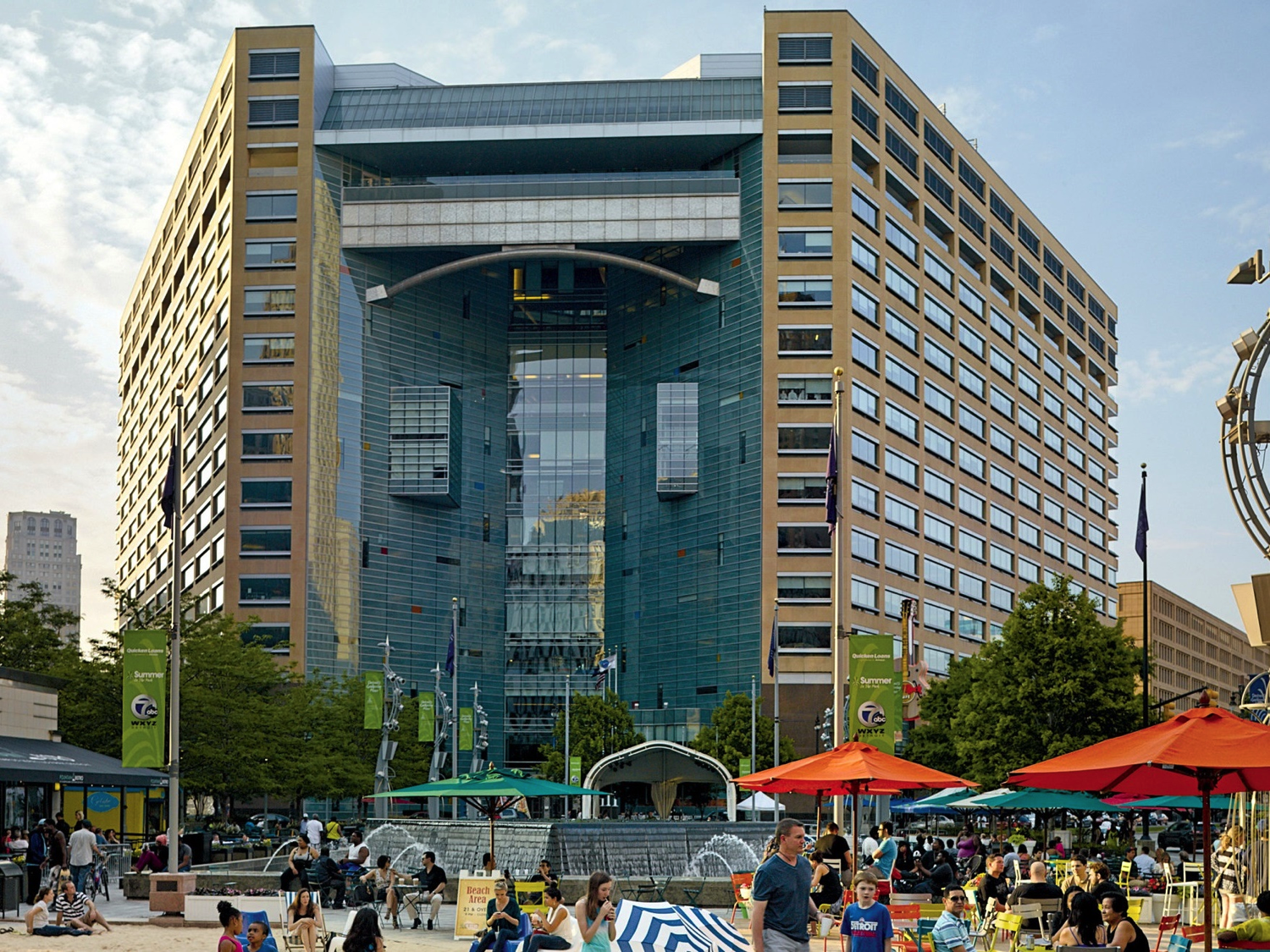
Quicken Loans HQ, downtown Detroit
Dan Gilbert is well-known as the owner of the Cleveland Cavaliers and as CEO of Quicken Loans. But he’s also become the fairy godfather of Downtown & Midtown Detroit in recent years. Since 2010, Rock Ventures has invested more than $2 billion into the city’s urban core, leading to the creation of 13,000 jobs and the renovation/redevelopment of 13 million square feet of building space (office, residential, retail). While many of the surrounding neighborhoods in Detroit continue to decline, there are more signs of positive momentum in downtown and Midtown than there have been in decades. This article by John Gallagher of the Detroit Free Press gives a good summary of the efforts led by Gilbert to re-active Detroit’s city center.
The Downtown Project (Las Vegas, NV)
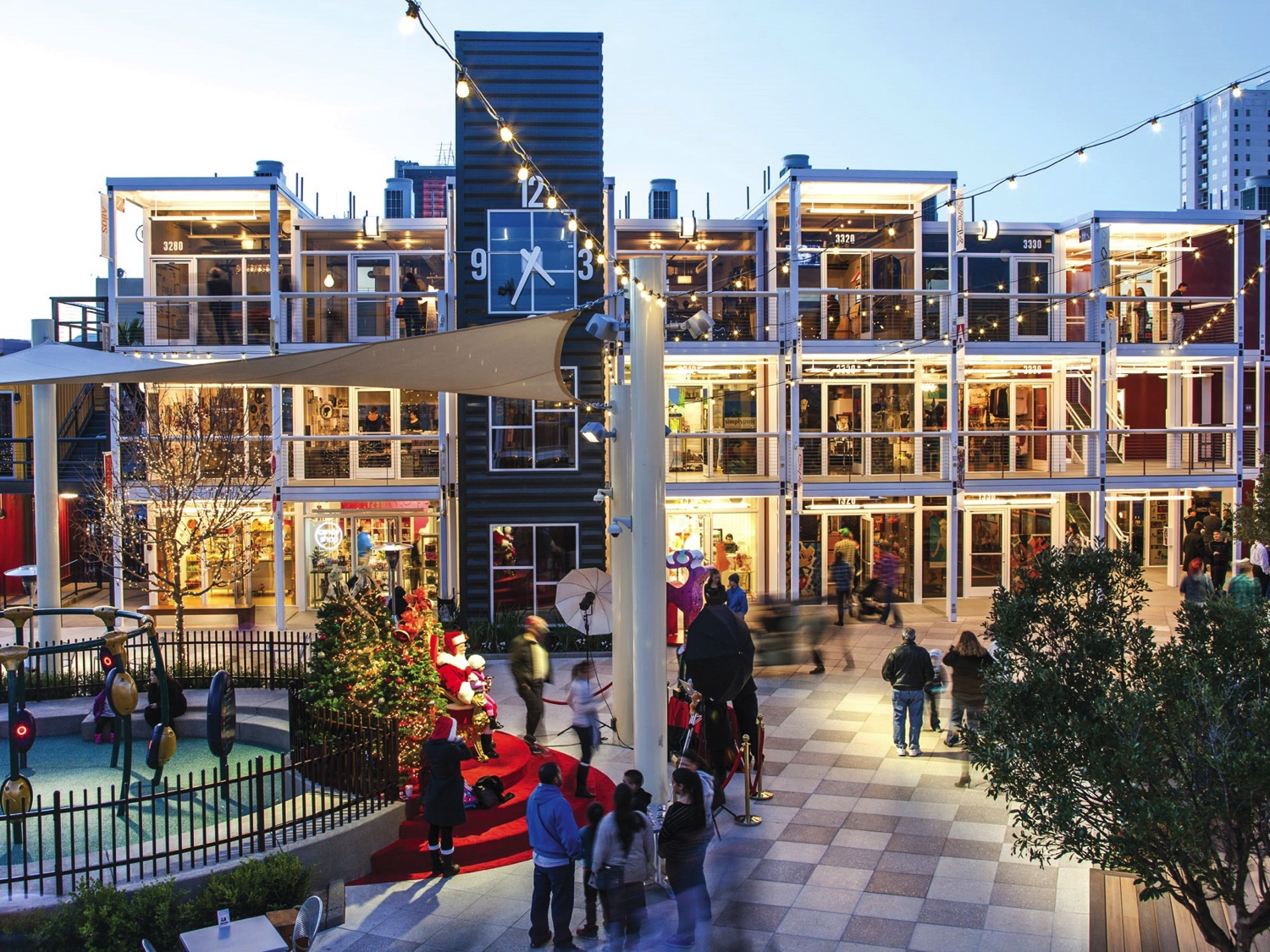
The Downtown Project, Las Vegas, NV
Tony Hsieh, founder & CEO of Zappos, relocated his company into downtown Las Vegas and embarked on an ambitious plan to re-activate the entire district through the Downtown Project. The plan is focused on its mission to “help make downtown Vegas a place of Inspiration, Entrepreneurial Energy, Creativity, Innovation, Upward Mobility, and Discovery, through the 3 C’s of Collisions, Co-learning, and Connectedness in a long-term, sustainable way.” Tony Hsieh has invested nearly $500 million of his own money to push the project forward. The overly ambitious nature of the Downtown Project has caused some observers to question its level of success. But there is now doubt that the area has improved dramatically.
South Lake Union (Seattle, WA)
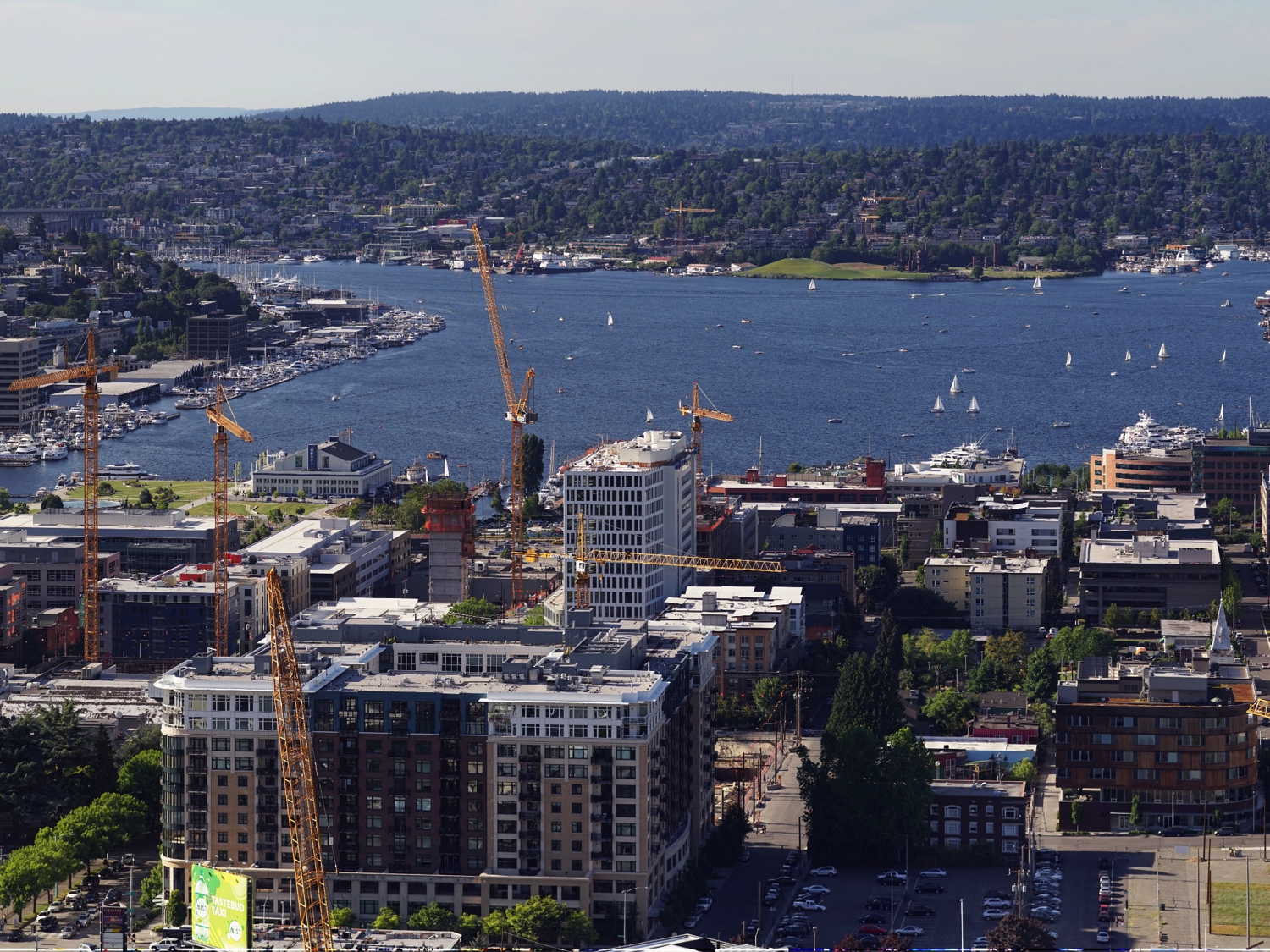
Panorama of South Lake Union by Dllu via Wikimedia Commons via Flickr (CC BY-SA 4.0)
The South Lake Union district just north of downtown Seattle is one of the most successful urban transformations of our generation. As recently as 10-15 years ago, the area was littered with empty parking lots, vacant warehouses, and shuttered industrial buildings. Thanks to Paul Allen (co-founder of Microsoft) and Vulcan Real Estate, South Lake Union has emerged as one of the country’s best examples of a vibrant urban district. Today, the area is home to Amazon’s global HQ which hosts tens of thousands of employees, dozens of other major technology firms & startups, thousands of urban residential units, and a wide range of amenities (restaurants, bars, art-filled plazas, etc.). The district’s re-activation has been so successful that just about every other up-and-coming area in the Seattle region is now claiming to be “the next South Lake Union.”
OKC MAPS (Oklahoma City, OK)
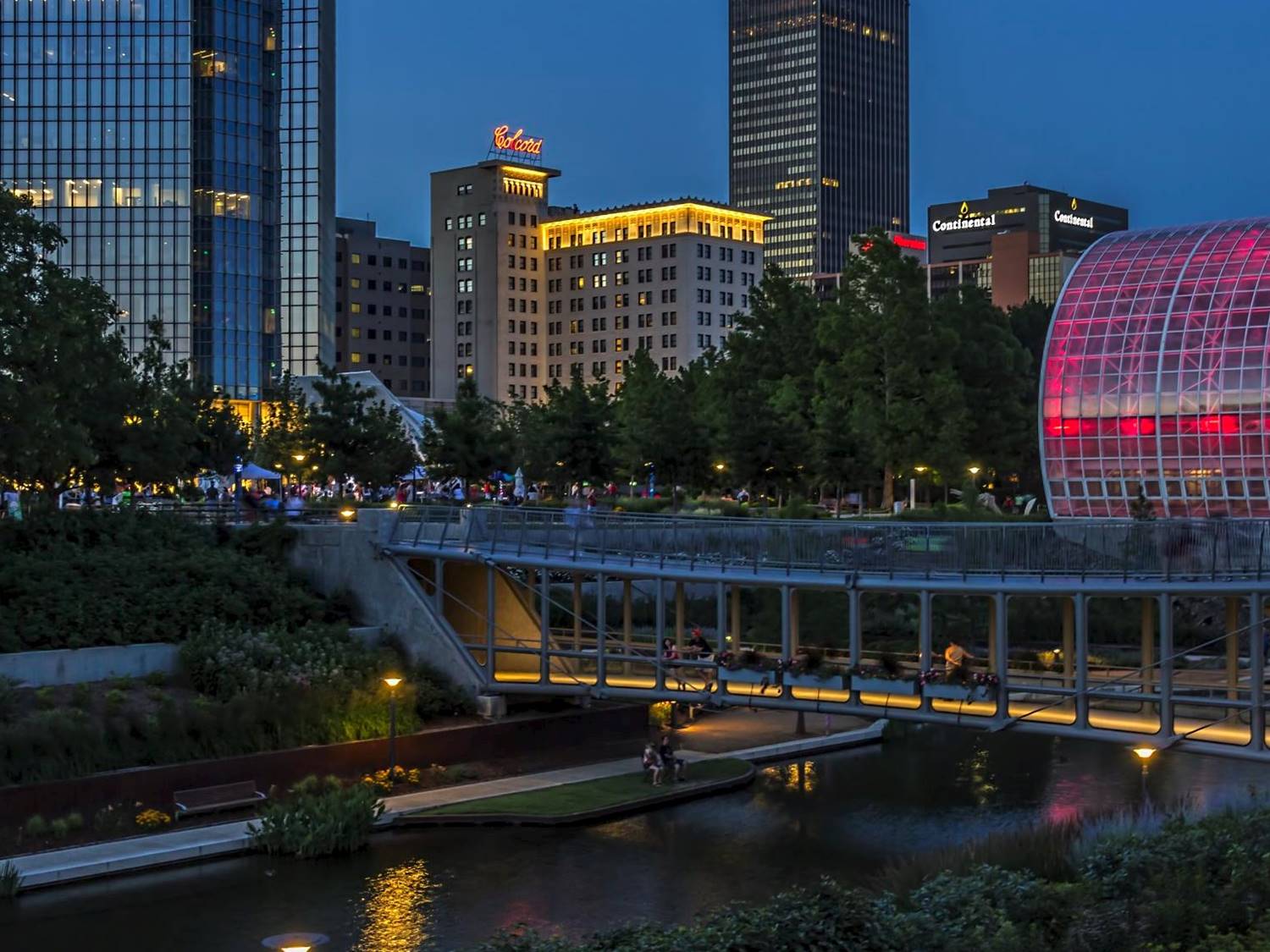
Downtown Oklahoma City by Kool Cats Photography Via Flickr
Oklahoma City’s downtown district has enjoyed a complete turnaround in recent years thanks to the Oklahoma City’s MAPS program. MAPS is an inspiring story because of the city’s very conservative political environment, not the most obvious place you’d expect to see a major public sector investment to drive the revitalization of an entire downtown. Nonetheless, city leaders responded to the community’s low state of affairs in the 1980s and 1990s by implementing the MAPS (Metropolitan Area Projects) program. MAPS is a temporary sales tax increase to fund quality of life improvements, mostly in the downtown district. It was so successful the first time around that they did a second round of MAPS, and then a third MAPS. All of these major public sector investments have helped the city’s downtown become a much more active district.
Titletown District (Green Bay, WI)
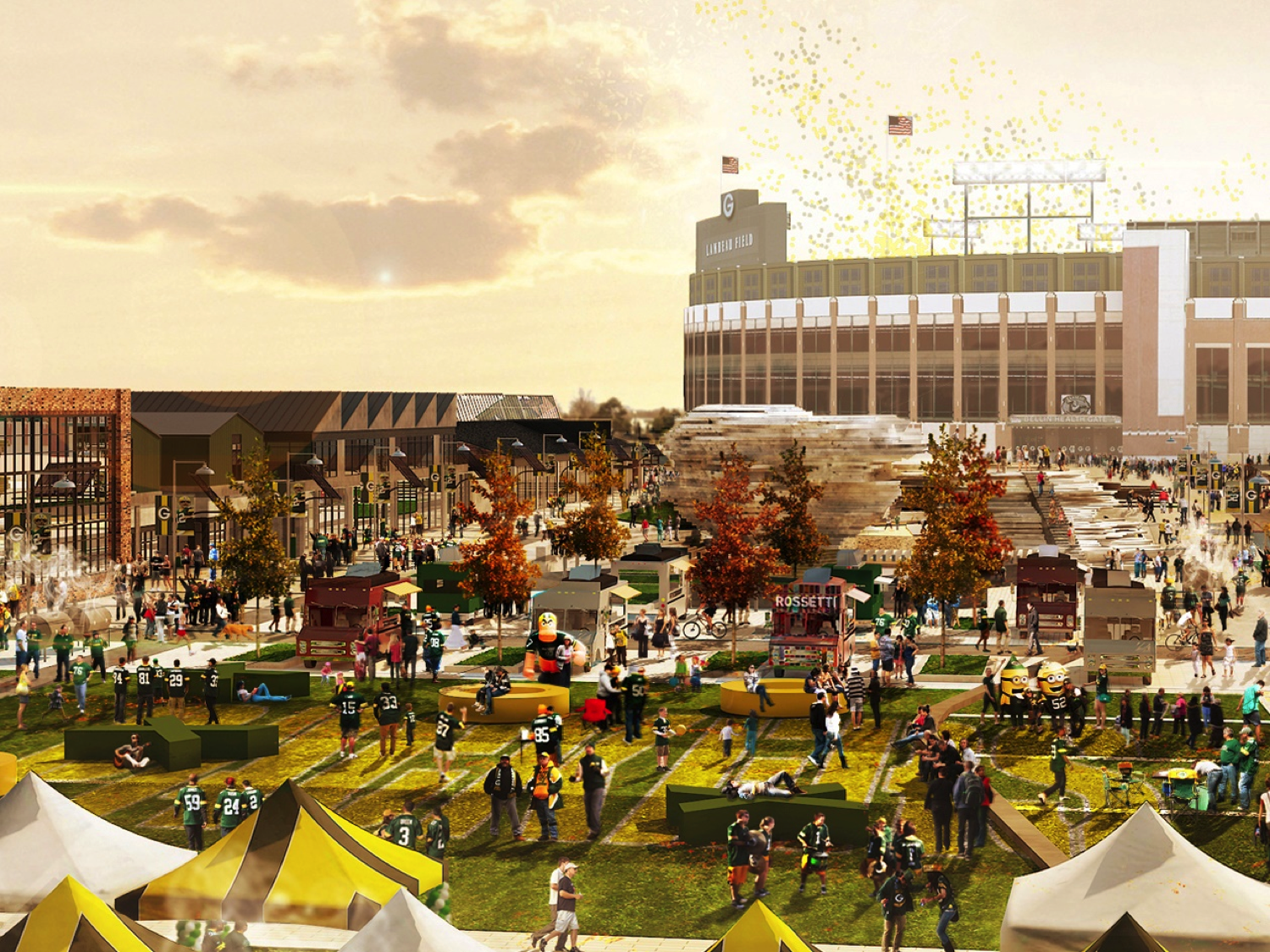
Artist rendering of Titletown District in Green Bay, WI. Image via Rossetti.
The Green Bay Packers are spear-heading a unique project that is transforming a 34-acre property adjacent to Lambeau Field (formerly a stadium parking lot) into the Titletown District. At the center of this new development will be a 10-acre central park including a sledding hill with tubing lanes and views of Lambeau Field, an ice skating trail and pond, and other active uses. Surrounding the central park will be a 4-star Lodge Kohler hotel, a major expansion of the Hinterland Brewery, and retail, office, and residential spaces. This article by Mary Bergin of the Chicago Tribune describes the district in more detail.
Mueller (Austin TX’s Former Airport)
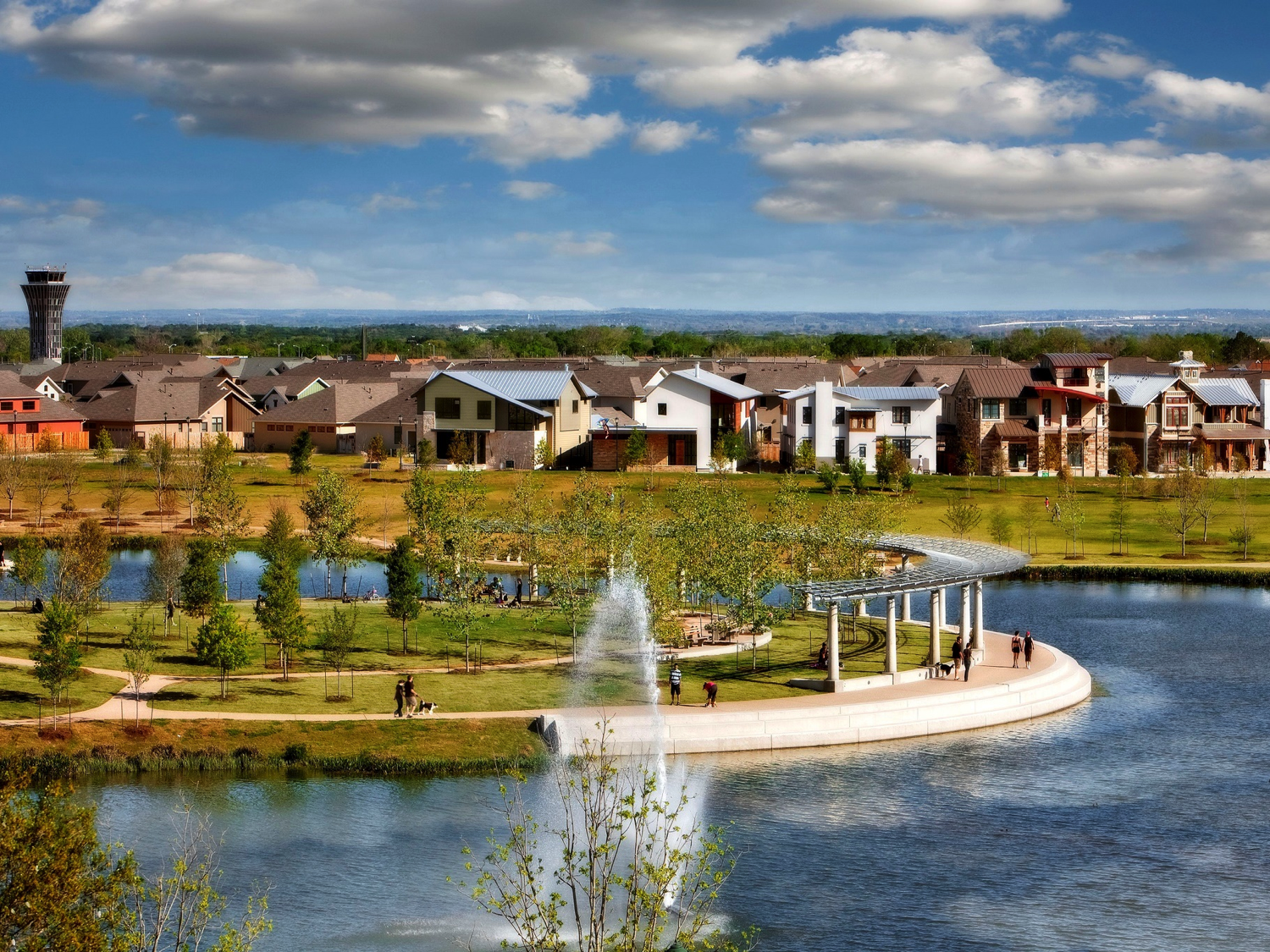
Mueller Lake Park, via Facebook, EGRSO
Austin’s former Robert Mueller Municipal Airport shut down in the late 1990s when a new airport was constructed at the former Bergstrom Air Force Base on the edge of town. After the old airport closed, the City of Austin was faced with a big challenge/opportunity– What to do with 700 acres of brownfield land in the middle of the city (Mueller is only 2 miles from the University of Texas campus and 3 miles from downtown)? After an extensive planning process, the City chose to partner with Catellus as the master developer to create a massive new mixed-use community: Mueller Austin. The neighborhood is well over 50% built out and includes major employers like the Dell Children’s medical center, an assortment of shops and restaurants, thousands of urban residential units (single family homes, apartments, townhomes and other housing styles), and a rich network of open spaces. I’ve been tracking the development of Mueller first-hand since the mid-2000s when construction began on the first sections, and am really excited to see the district become denser and more vibrant, with some of the most exciting sections (like the Alamo Drafthouse cinema) recently opened and others (like the Texas Mutual Insurance HQ office) under construction right now.
Stapleton (Denver, CO’s Former Airport)
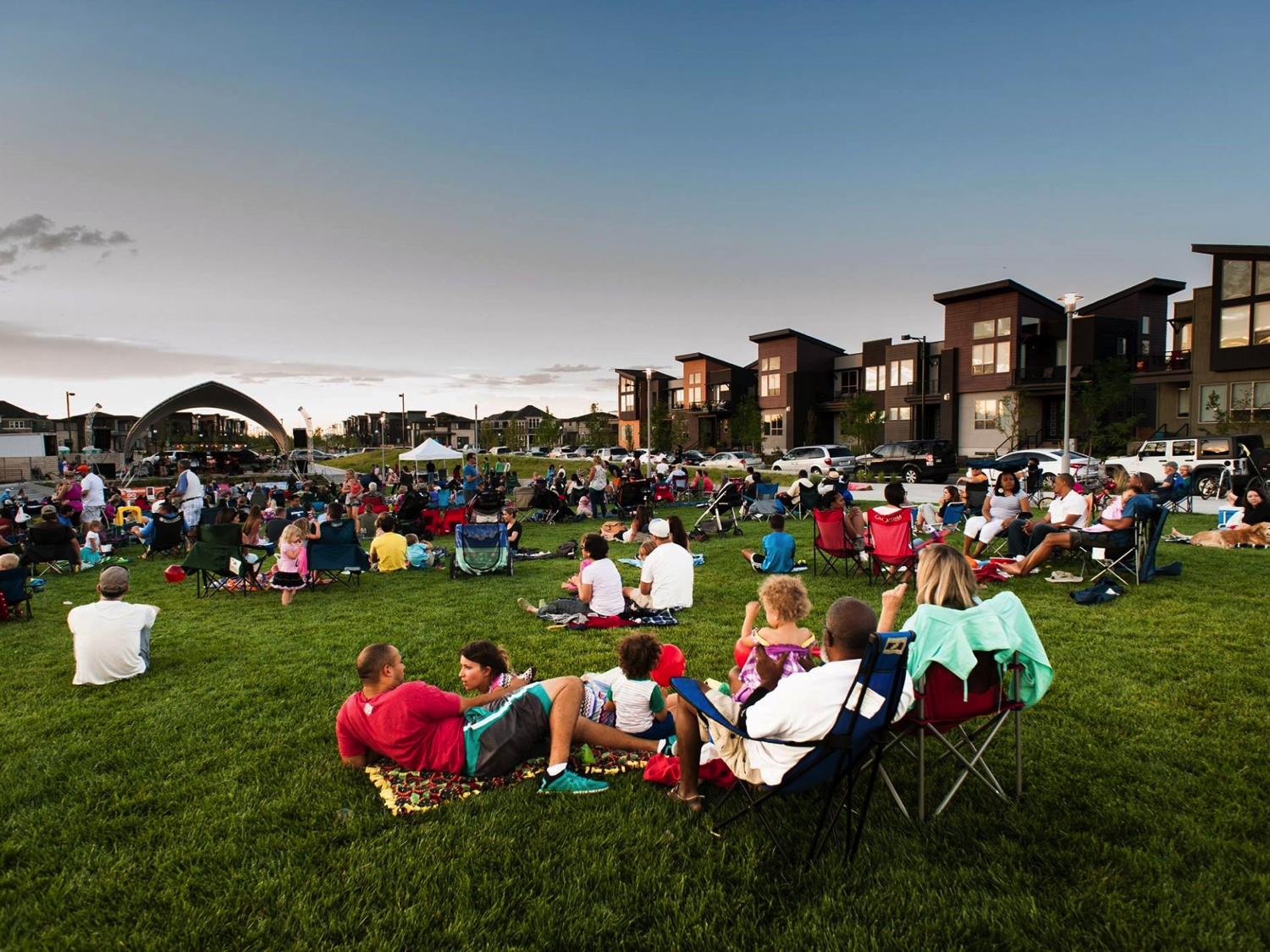
Stapleton, via Facebook, Stapleton Denver
Similar to Austin, Denver also had an old airport in the middle of the city, about 4-5 miles east of downtown to be exact. Stapleton Municipal Airport closed down in 1995 when Denver built a major new international airport (DIA) northeast of the city. In 1998, the City selected Forest City as the master developer, and began redevelopment in 2001. The resulting Stapleton district covers 4,700 acres, much larger than Mueller in Austin but similar in its development patterns. The district is filled with urban housing, shops, public spaces, and other facilities. And as of 2016, Stapleton now has a direct commuter rail link to the current Denver International Airport.
Strategy #2: Unique Redevelopment Projects
Seaholm Power Plant (Austin, TX)
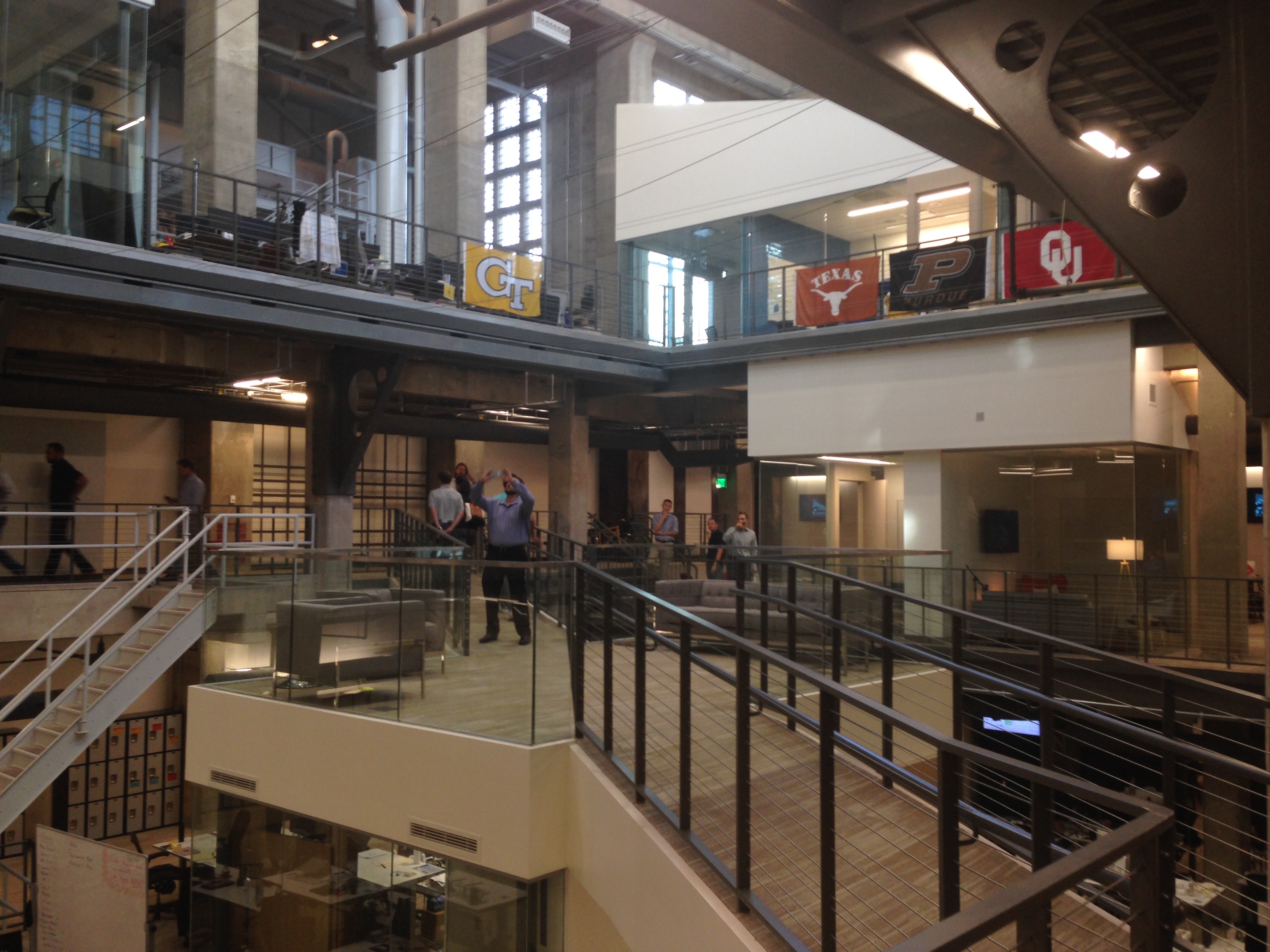
Office space inside Seaholm Power Plant (Austin, TX)
The long-dormant Seaholm Power Plant in downtown Austin is now the centerpiece of a dynamic mixed-use redevelopment. This project took over a decade from start to finish, but has turned out to be a phenomenal success story thanks to the collaborative public-private partnership involving the City of Austin and a development team led by Southwest Strategies Group. The project includes a new 300+ unit residential condo tower, a new central library for the City of Austin, downtown’s first Trader Joe’s grocery store, office space including Under Armour’s Connected Fitness division, and of course, the old power plant building which is home to Athena Health’s corporate HQ and a diverse group of smaller firms. I took the photo above with my iPhone on a recent tour of the development (sorry for the poor image quality :)…and came away totally impressed. It’s the most unique office space I’ve ever been in.
Mill Redevelopment (Greenville & Simpsonville, SC)
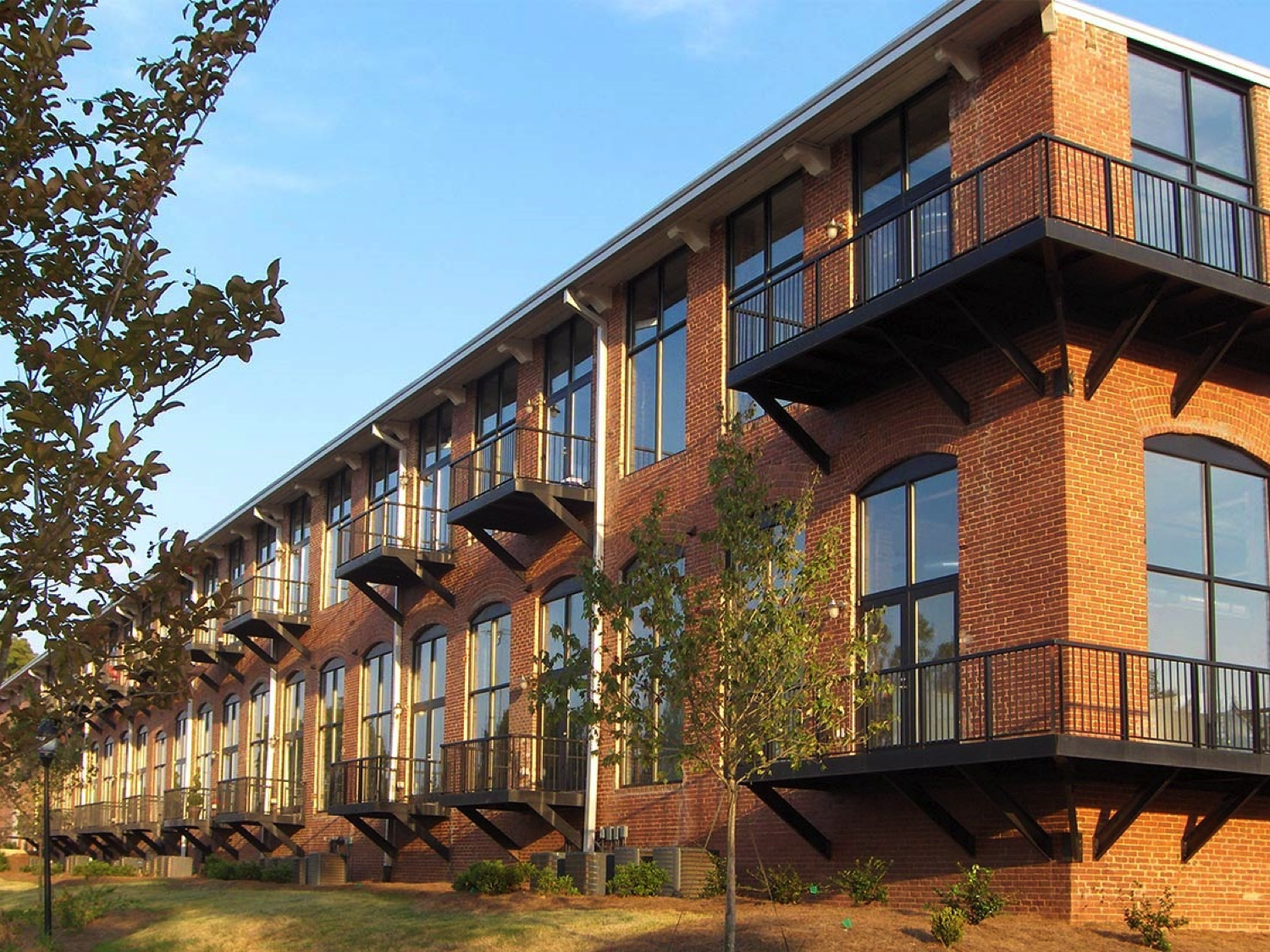
Cotton Mill Place in Simpsonville, SC via Johnston Design Group
Old textile mills are a major feature across Upstate South Carolina (the region including Greenville & Spartanburg). For decades, many of these facilities sat vacant as the textile trade moved overseas to manufacture their products. In recent years, the real estate community has re-discovered some of these unique buildings and has re-purposed them into new spaces. In Greenville, SC, the former Monaghan Mill has been converted into The Lofts at Greenville, an upscale 194-unit residential property. The Loom at Cotton Mill Place (pictured above) in Simpsonville, SC is another example of unique project which turned a vacant mill into an upscale event space. If you’re interested, this article by Sherry Jackson in the Upstate Business Journal offers a much deeper look at how former textile mills are being re-activated across South Carolina.
Mill District (Biddeford, ME)
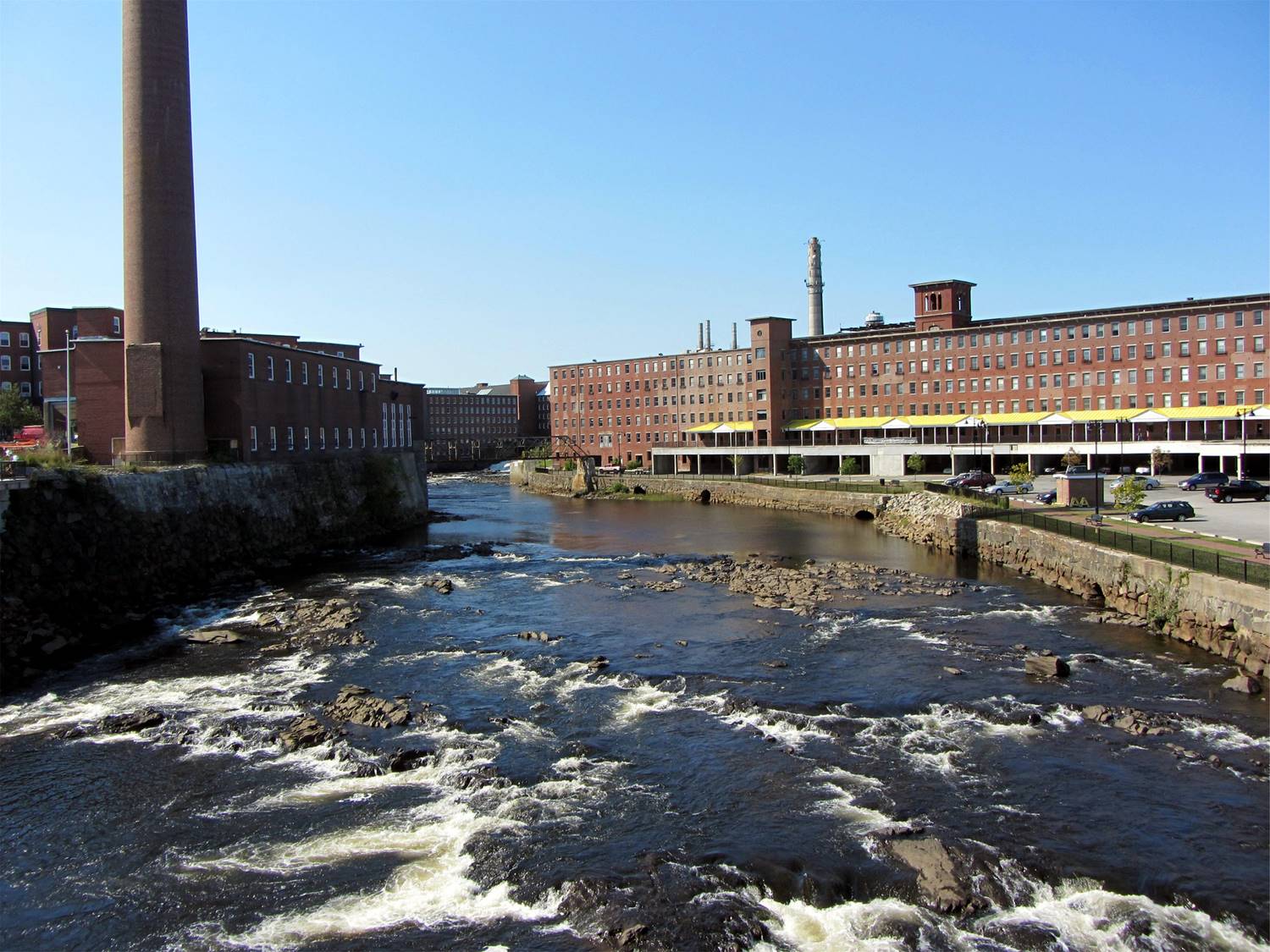
20120912 109 Biddeford, Maine by David Wilson via Flickr (CC BY 2.0)
Biddeford, Maine struggled like many New England communities for decades after the textile mills were vacated during the manufacturing decline which began in the 1970s and continues to this day. For many years, the large mills cast a literal and figurative shadow over the community’s downtown. Today, thanks to some visionary investments and creative businesses, the city’s 35-acre Mill District is generating a major downtown revival. The new district is now home to a diverse set of businesses ranging from a distillery to an art school to a new Portland Pie Co. restaurant, which together employ roughly 500 workers. Another recent investment which will fuel further revitalization is the planned $50 million redevelopment of the 233,000-square-foot Lincoln Mill for 100 loft apartments and condominiums and a 80-room luxury hotel. This article by Jim Baumer at the Boston Globe provides a closer look at how the mills in Biddeford are being leveraged for economic development.
The Arcade (Providence, RI)
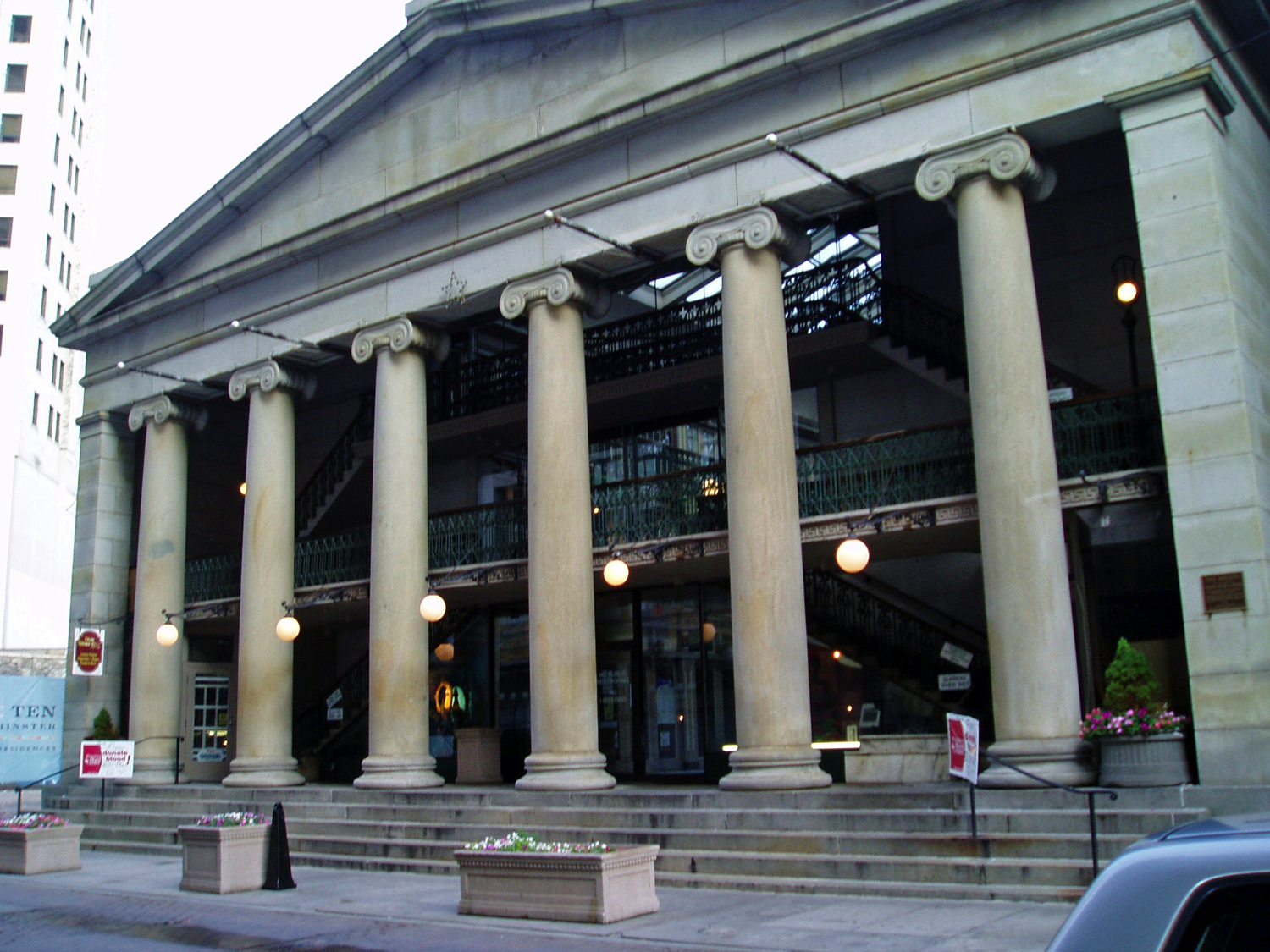
Westminster arcade by Loodog via Wikimedia Commons (CC BY-SA 3.0)
The nation’s first indoor shopping mall, Westminster Arcade in downtown Providence, Rhode Island has been re-purposed in recent years to include a diverse mix of small shops, restaurants, offices, and “micro loft” apartments. All of this is crammed into a 48,000 sq ft space originally built in 1828. When I toured the newly re-opened space in late 2014, I was struck by how unique the building is. It would be hard to imagine a new space like this being built today. Thanks to Alisha Pina from the Providence Journal for the tour! And check out her article about the Arcade here.
McMenamin’s Kennedy School (Portland, OR)
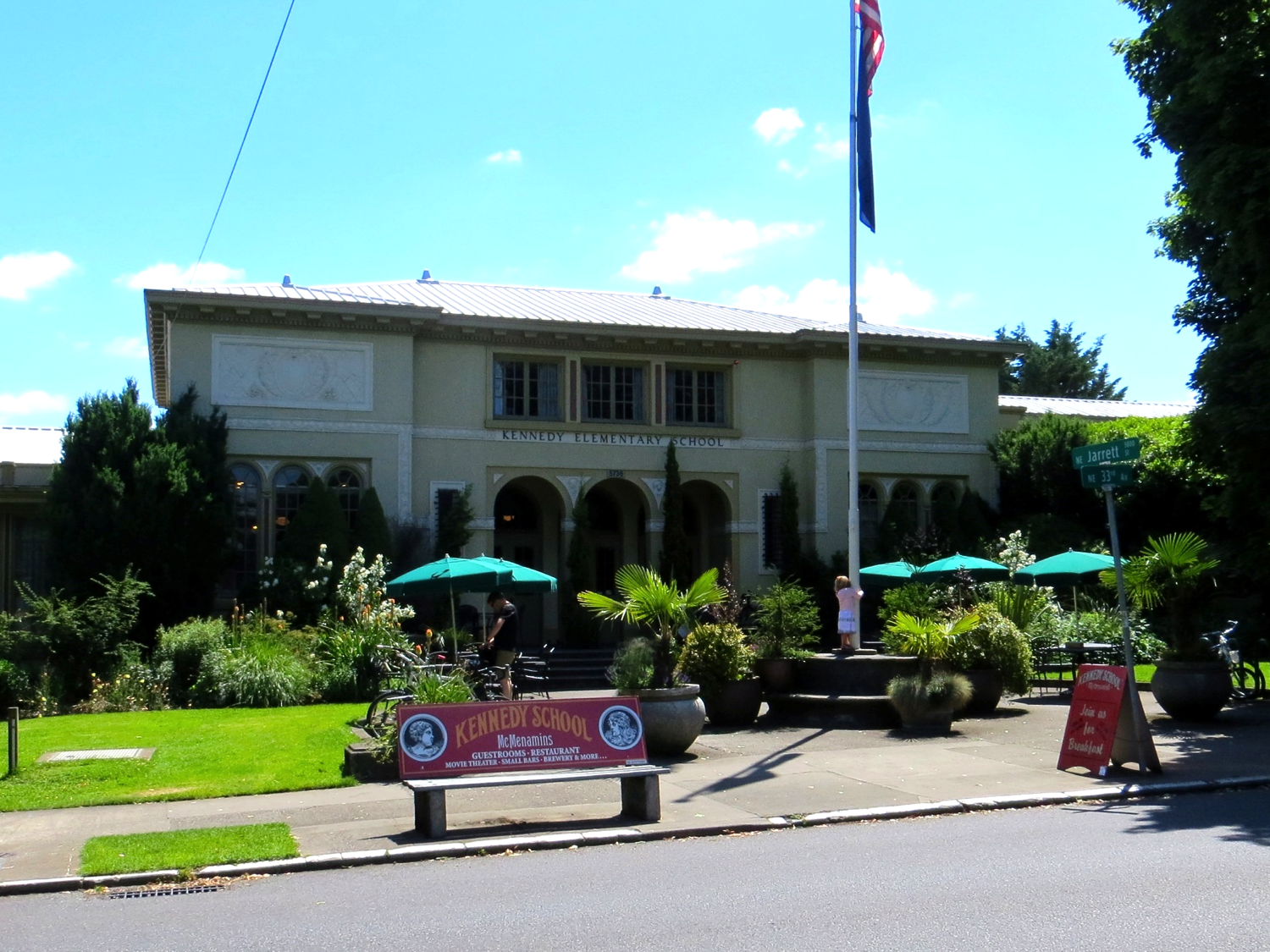
McMenamins Kennedy School by Jinx McCombs via Flicker (CC BY 2.0)
Portland, Oregon has no shortage of unique buildings that have been re-purposed and turned into interesting new uses. But perhaps my favorite unique redevelopment project in Portland is the McMenamin’s Kennedy School. The former elementary school building (first constructed in 1915) was converted into a major attraction with a 57-room boutique hotel, a movie theater, a restaurant, and multiple small bars. Check out “Travel Bug Robert” and his YouTube video about McMenamin’s Kennedy School to see more.
Shack-Up Inn (Clarksdale, MS)
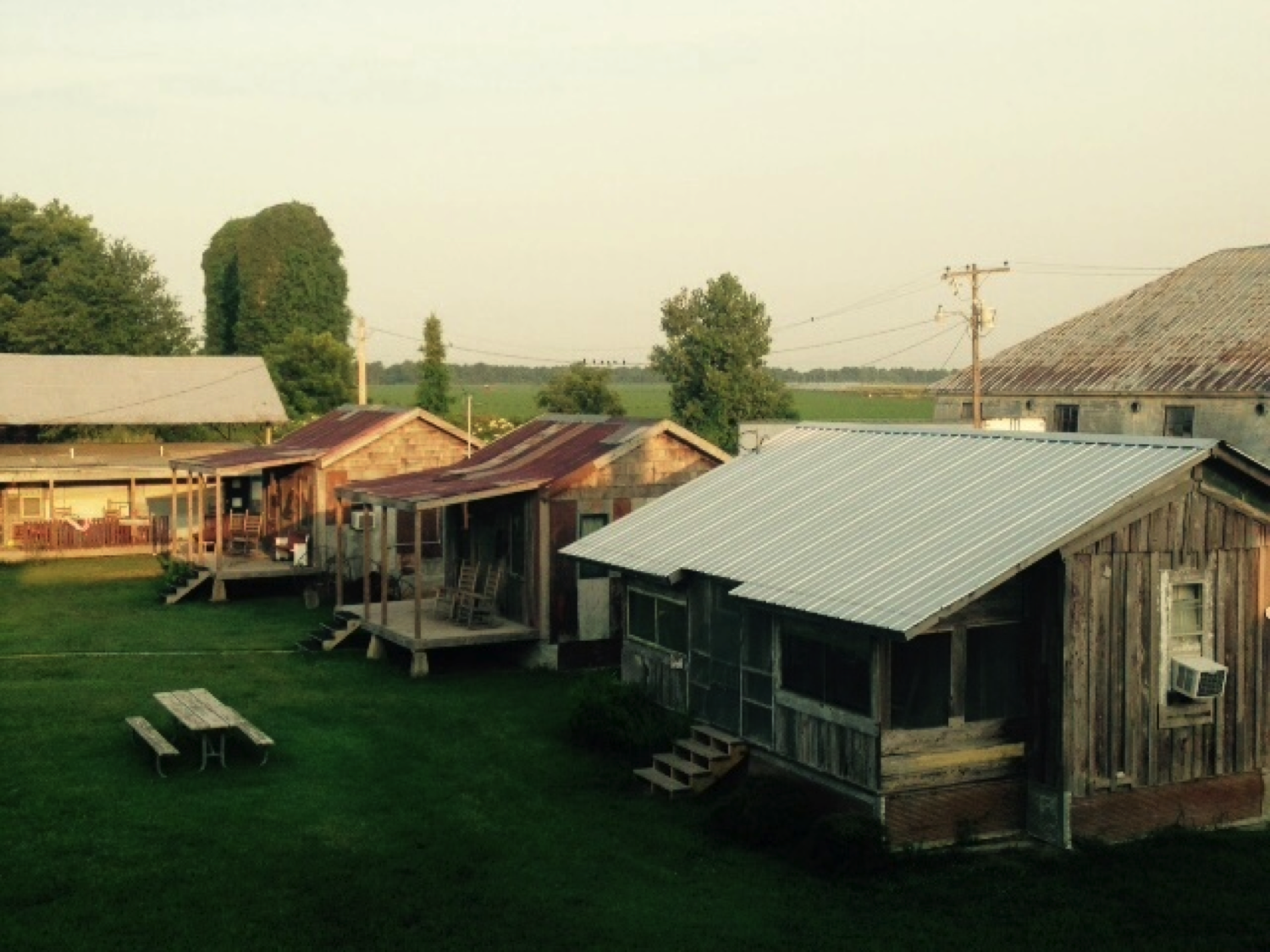
Shack-Up Inn, Clarksdale, MS, photo by John Karras
I spent a night at the Shack-Up Inn back in the Summer of 2015 during a 3-state tour as part of our strategic plan update for the Delta Regional Authority (which happens to be headquartered in Clarksdale). In fact, that photo above is from the balcony outside my hotel room! These days you often hear the term “authentic” when real estate developers and city planners describe their aspirations for a particular neighborhood or district. There is nothing more authentic than this–a former working plantation which has been preserved and re-envisioned as a hotel. Read more about this incredibly unique development and its story here.
BTC Old Fashioned Grocery (Water Valley, MS)

Image via Facebook The B.T.C. Old-Fashioned Grocery, Water Valley, MS
Water Valley, MS (population 3,393) is ground zero for what some would call an unlikely renaissance. This YouTube video gives a behind-the-scenes look of how this small Main Street district is being transformed. The BTC Old Fasioned Grocery is the hallmark revitalization project in Water Valley, but you’ll see from the video that much more has happened and is happening to re-imagine this small downtown district.
This is rural placemaking at its best. One advantage smaller towns and cities have is their affordability and their accessibility. Someone from a nearby larger town (like Oxford, MS where the University of Mississippi is located) or from a far-away big city (like DC) can come to a place like Water Valley and start making a big impact with relatively modest investments and lots of sweat equity. That’s exactly what is taking place with the BTC Grocery, a new coding school, and other re-activation projects along the Main Street in Water Valley.
Cops & Doughnuts (Clare, MI)
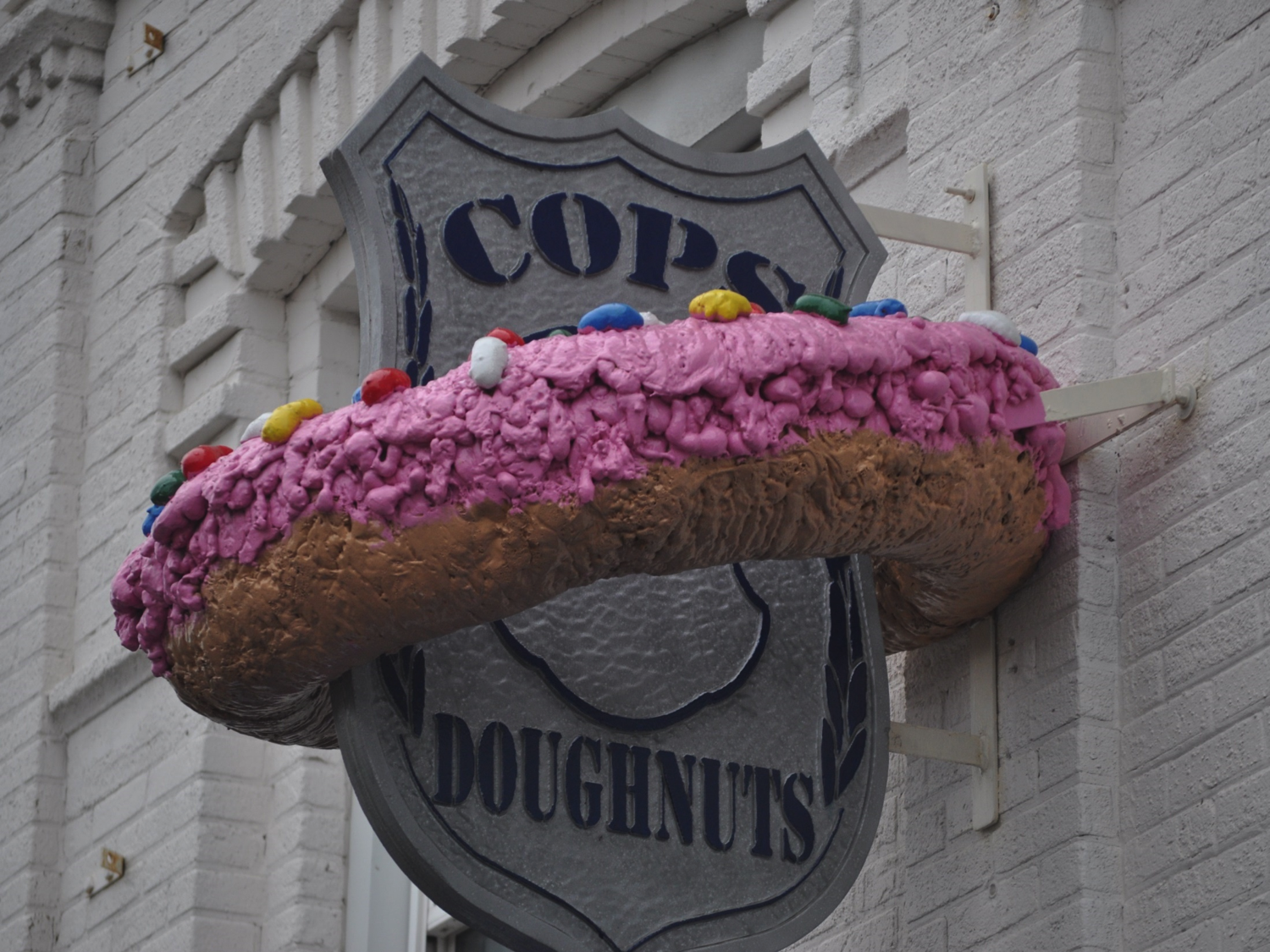
Cops & Doughnuts Store and Bakery in Clare Photo by Michigan Municipal League (CC BY 2.0)
Located in downtown Clare, Michigan, Cops & Doughnuts is an inspiring example of local entrepreneurship and creativity. The bakery was re-named Cops & Doughnuts in 2009 after the original doughnut shop and bakery (established in 1896) was within weeks of closing and the nine-member Clare Police Department put in $1,500 each to revive the bakery. Since re-opening, the bakery and the Cops & Doughnuts brand have gained national media attention thanks to a string of clever marketing moves and product created with self-deprecating humor. Cops & Doughnuts sells merchandise (beyond pastries and food products) in an adjacent store, online, and in “substations” located in stores across Michigan.
Oz Museum (Wamego, KS)
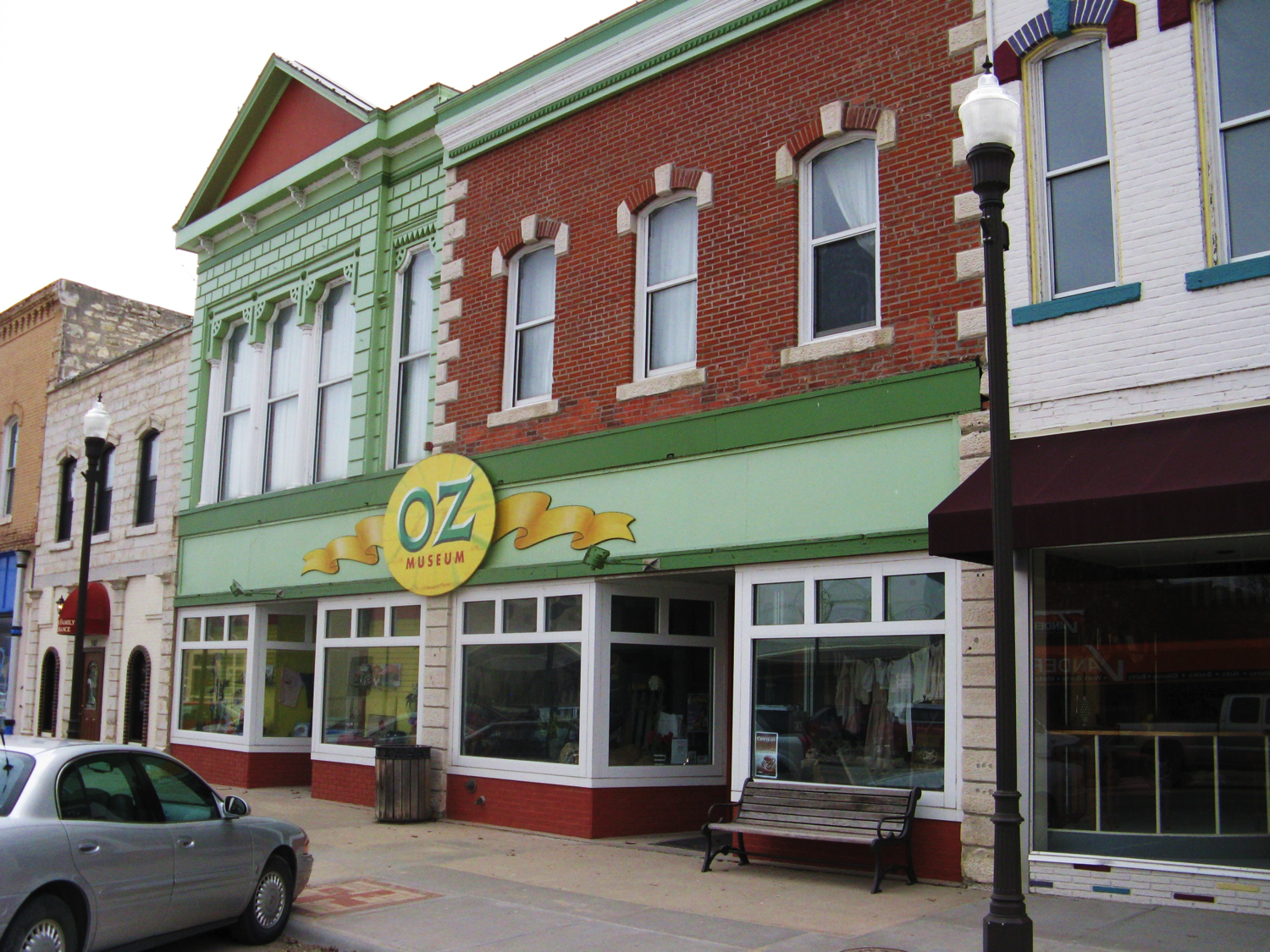
Museum_of_OZ_in_2008 (Public Domain via Wikimedia Commons)
The town of Wamego, KS (population 4,715) has revitalized its downtown by embracing the Wizard of Oz as a unifying theme. The Oz theme first arose in Wamego when a public display of a local high-school kid’s Wizard of Oz collectibles in Wamego’s Columbian Theater drew a significant amount of attention. The discovery of this rare and unique collection of Oz memorabilia led to the establishment of an Oz Museum that now houses thousands of Oz-related artifacts. Soon thereafter, a local businessman opened up the Oz Winery which has been a major success. The creation of an annual Oz-focused event – OZtoberFest – has created a greater level of activity and interest in the Oz theme. Building on the success, additional existing businesses in downtown Wamego changed their names or have begun to offer products with names that align with the emerging Oz theme such as nearby restaurant Toto’s Tacoz, and 1st National Bank of Wamego, a local bank which offers a limited edition Oz credit card. All of this has resulted in the addition of thousands of annual visitors and millions of dollars in extra spending within the local economy.
Strategy #3: Alley Projects
Alley Fair (Fargo, ND)
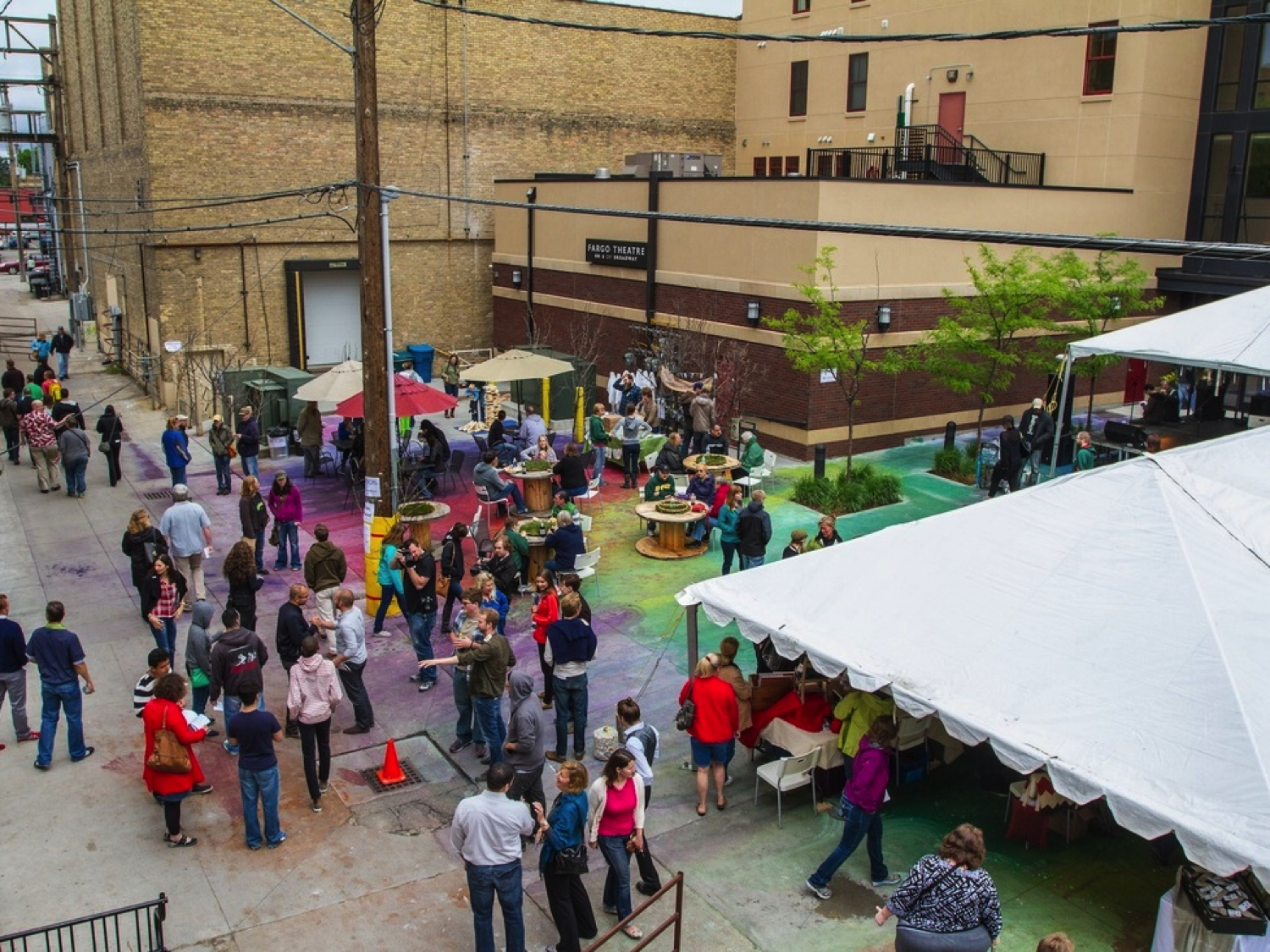
Image via Alley Fair
Alley Fair is a community event that works to activate and transform the alleyways of downtown Fargo by bringing together the area’s best food, music, and art. The event’s mission is to “design an environment that encourages guests to rethink urban landscapes.”
Artist Alley (Bismarck, ND)
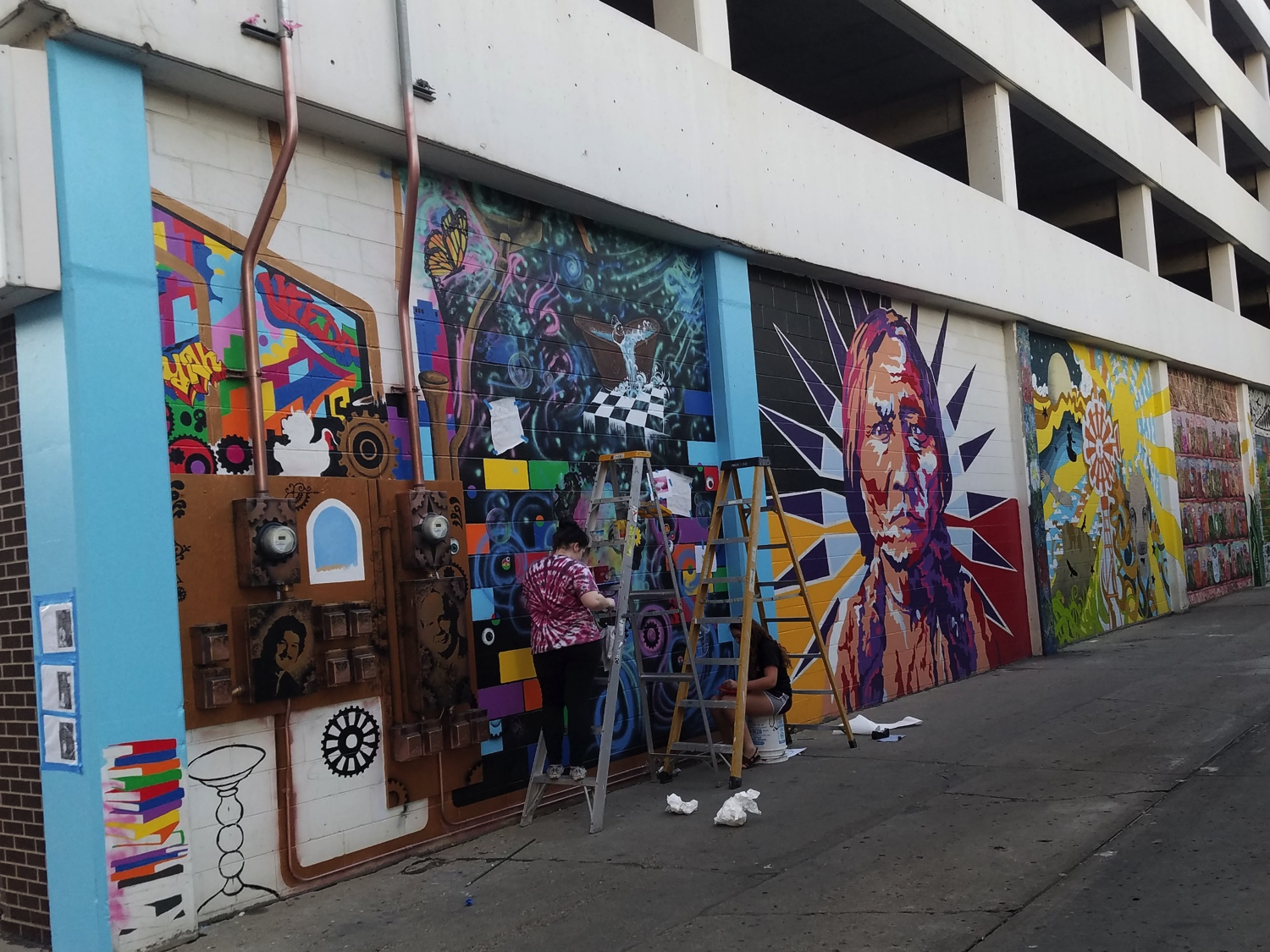
Artist Alley in Bismarck, ND, photo by Caroline Alexander
On the other side of North Dakota from Fargo, Bismarck is also experimenting with ways to activate its alley ways. A new art project has recently been deployed in downtown Bismarck to engage local artists in the creation of an outdoor art gallery along a previously desolate alley in the city’s urban core. Click through the pictures in the linked article to check out the
Printers Alley (Nashville, TN)
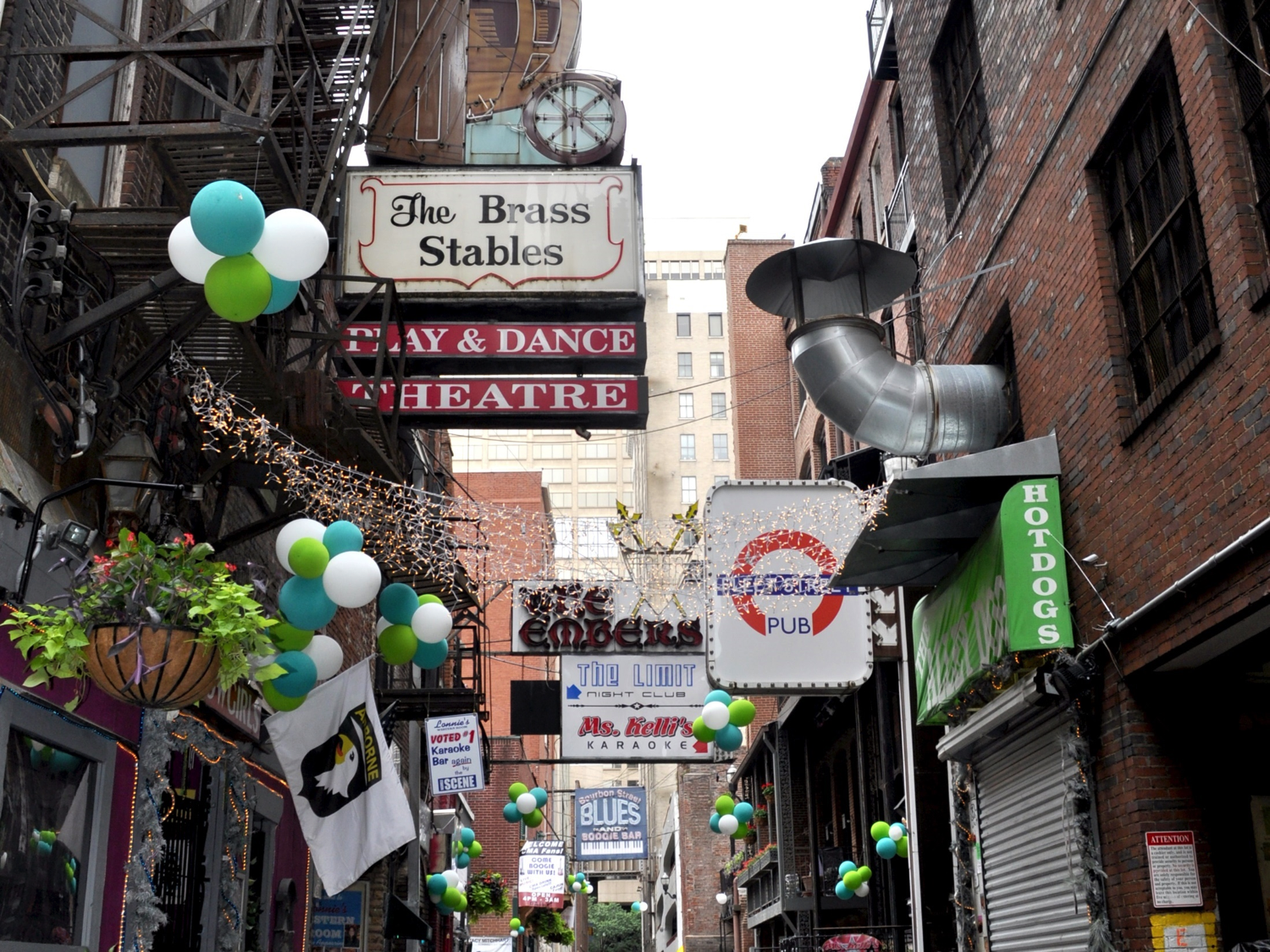
Printers Alley Itself by Chris Connelly via Flickr (CC BY 2.0)
Printers Alley in downtown Nashville was once the home of printing houses, publishers, and other journalistic enterprises. After those industries left the district, the alley transitioned into a nightclub and live music destination. Printers Alley has maintained its gritty urban appeal over the decades and continues to be a unique destination in downtown Nashville. The alley’s long-standing role as an entertainment destination stands in stark contrast to the city’s rapid transformation into an economic powerhouse.
Brewer’s Alley (Denver, CO)
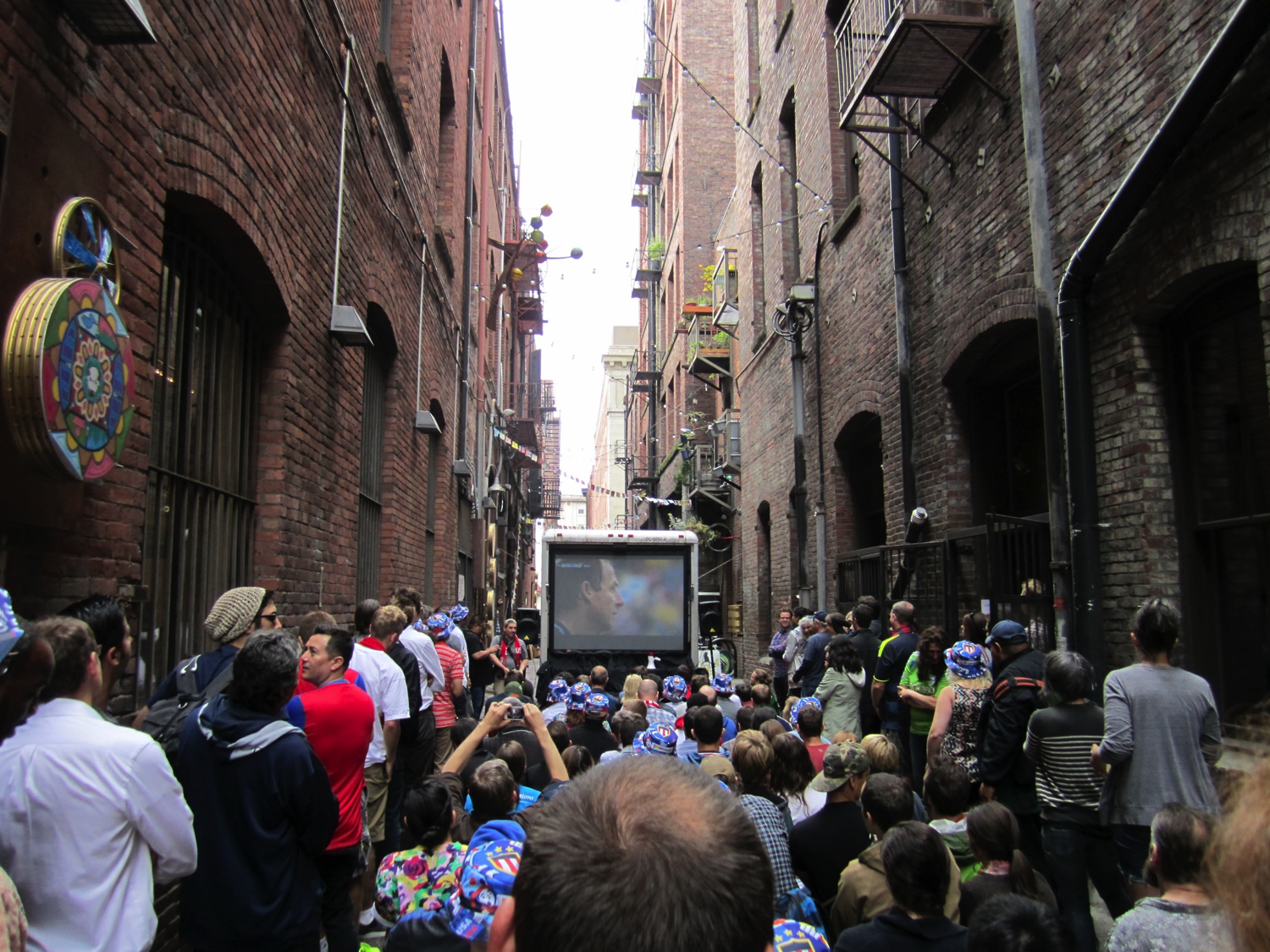
Brewers Alley, Downtown Denver
Brewers Alley is now approaching its 5th anniversary. In 2013, downtown Denver restaurant Rialto Cafe decided to hold an event to celebrate craft beer in the alley behind its restaurant location. It was such a success, that they recruited other restaurants and breweries to participate. Now it’s an annual event that fills “Brewers Alley” to capacity with the sights and sounds (and tastes) of breweries and related attractions.
Strategy #4: Infrastructure Activations
The High Line (New York, NY)
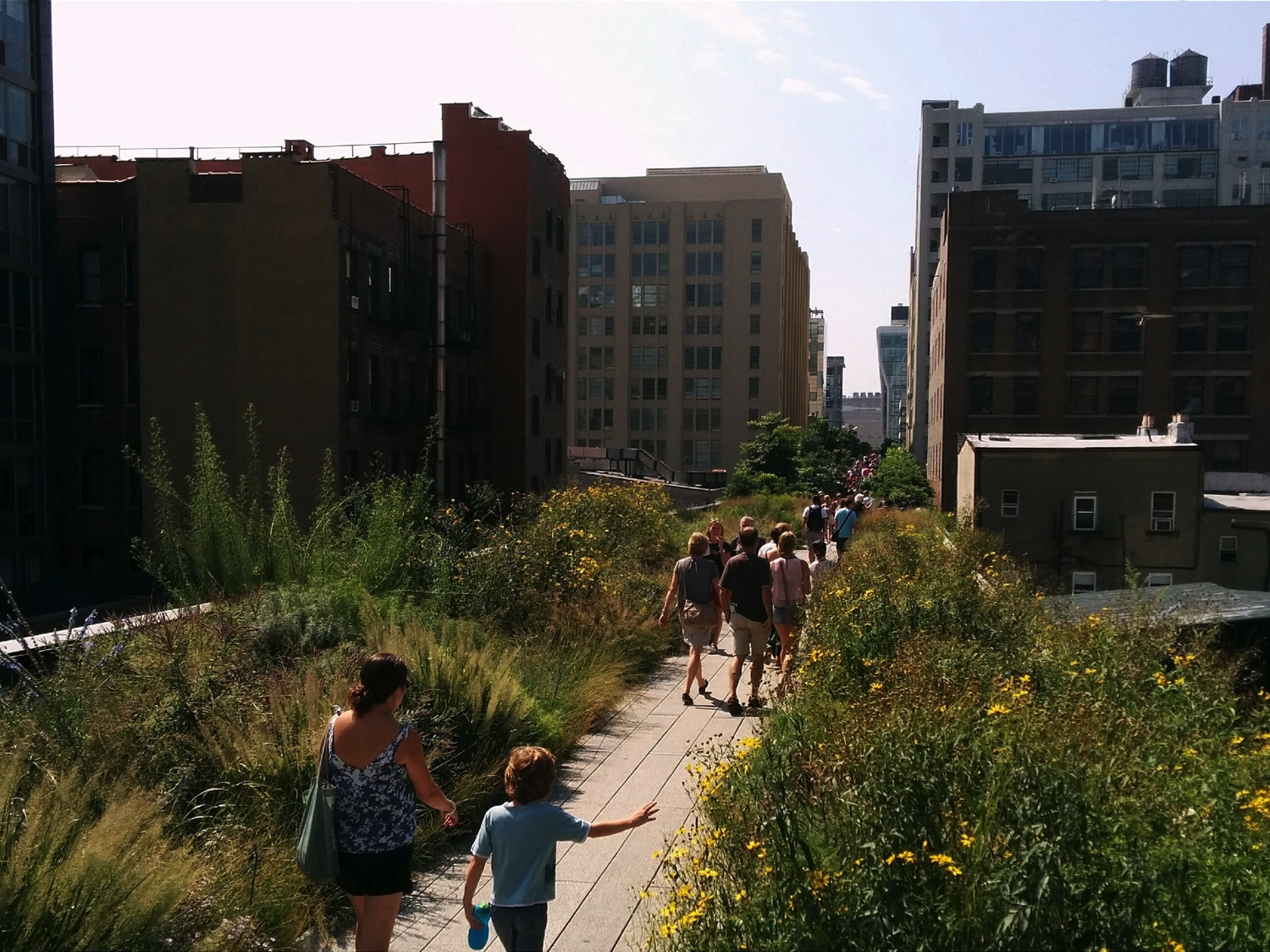
The High Line, New York City by Mark Skarratts via Flickr (CC BY 2.0)
The High Line is one of the most surreal spaces in New York City, or any city for that matter. It’s a former elevated freight rail line serving the West side of Manhattan that was converted into a linear park in 2009, with a second section opening in 2011, and a third in 2014. Instead of tearing down this defunct piece of infrastructure that served a bygone era, or worse, leaving it as an industrial eyesore dragging down property values and development potential. The rail line sat dormant for nearly 2 decades before a group of neighborhood activists had the ingenious idea to convert it into a usable public space. And speaking of property values, and development potential, the land adjacent to the High Line has benefitted tremendously from this re-activated space. As of 2014, an economic impact study estimated the park had generated $900 million of new tax revenue and $2 billion of new economic activity.
Klyde Warren Park (Dallas, TX)
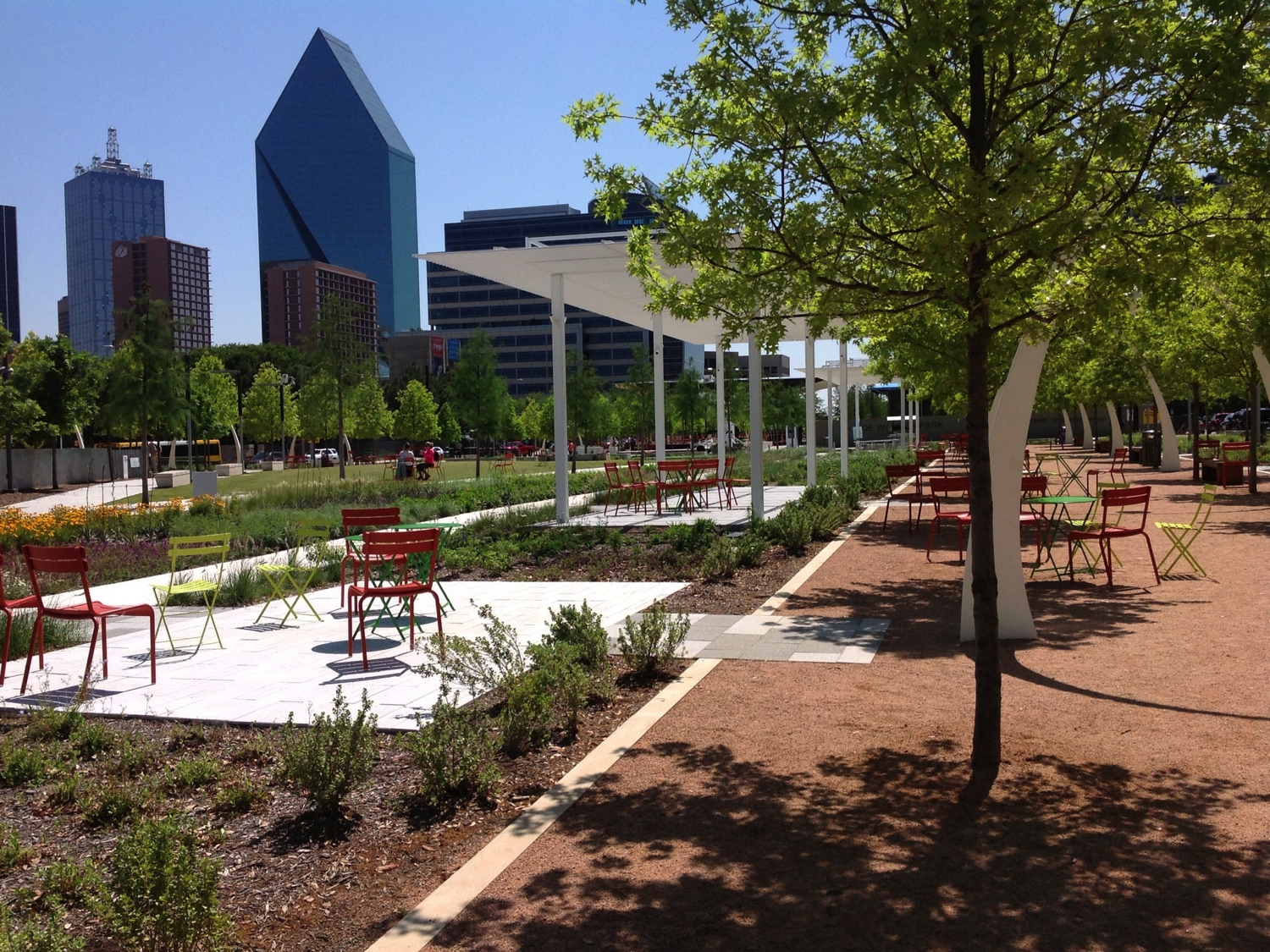
Sunny Day at Klyde Warren Park by Kevin 1086 via Wikimedia Commons (CC BY-SA 3.0)
A lot of cities talk about how the freeways encircling their downtowns serve as barriers between neighborhoods. These highways, most of which were built in the 1950s-1970s, effectively cut off central business districts from their surrounding urban neighborhoods and corridors. Dallas has taken a huge step toward improving the connections between its core downtown district and the adjacent Uptown mixed-use district with the construction of Klyde Warren Park a few years ago. I’ve been here a few times and each time am impressed with how you don’t notice at all the hundreds of vehicles traveling underneath you on the Woodall Rogers Freeway every few minute. If an auto-dependent city like Dallas can improve its urban vitality by covering up a freeway with an urban park, many more cities should be able to make similar improvements.
Tom McCall Waterfront Park (Portland, OR)
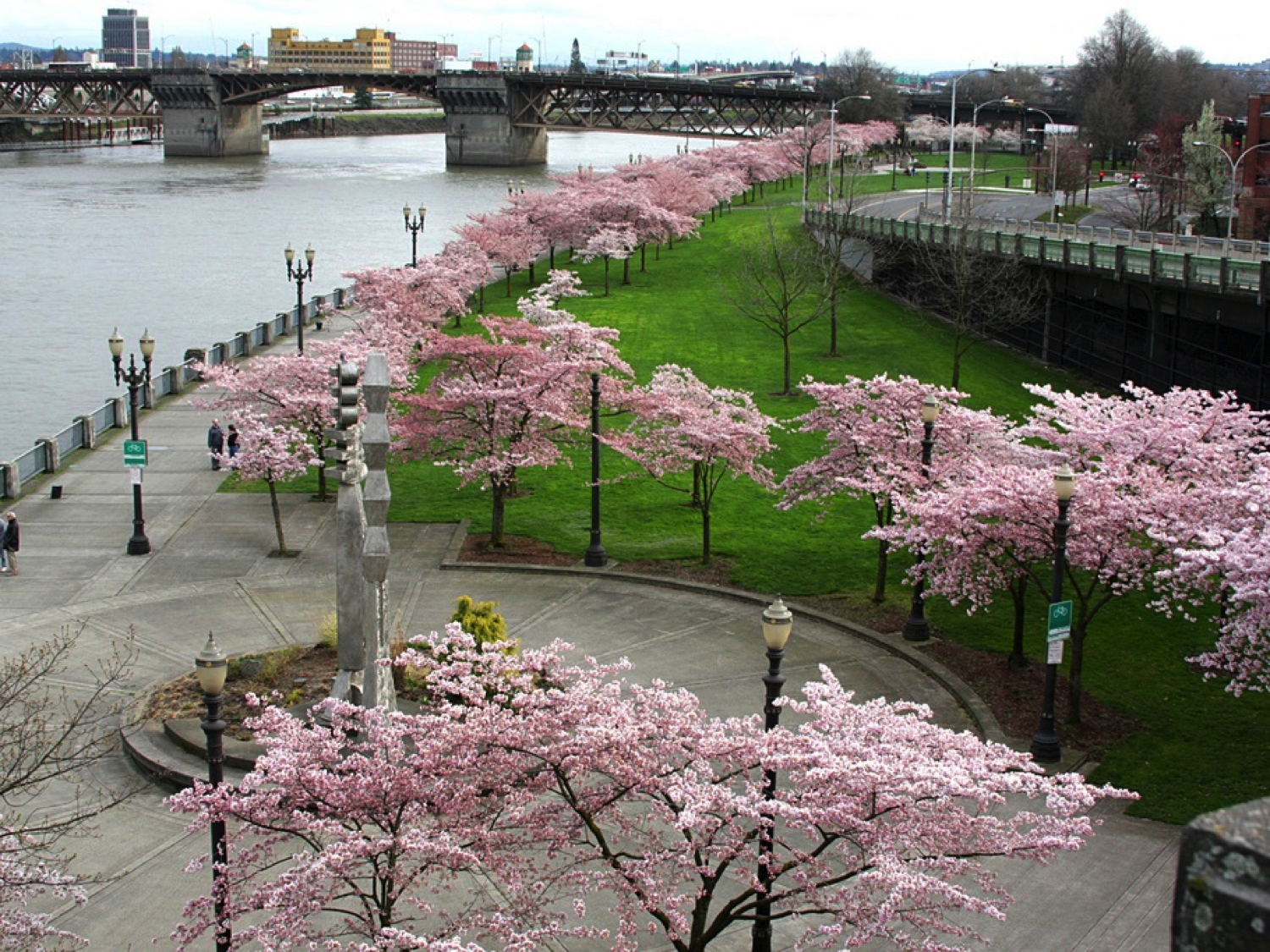
Waterfront Park, Portland by Northwes-Historian via Wikimedia Commons (CC BY-SA 2.0)
Portland is far less auto-dependent than Dallas, with a robust transit system and one of the most bike-friendly and pedestrian-friendly big city landscapes in the US. But it wasn’t always that way. Tom McCall Waterfront Park, the green space connecting downtown Portland to the Willamette River, was once an urban highway. In 1968, Governor Tom McCall initiated a planning task force to study the possibility of replacing Harbor Drive, the highway running along the edge of downtown, with an urban park. In 1974, the highway was torn up and by 1978, the park was in place. Pretty amazing given that this all took place during a decade when most big cities were doing the opposite: tearing up neighborhoods to install highways in and around their downtowns.
Times Square Pedestrian Zone (New York, NY)
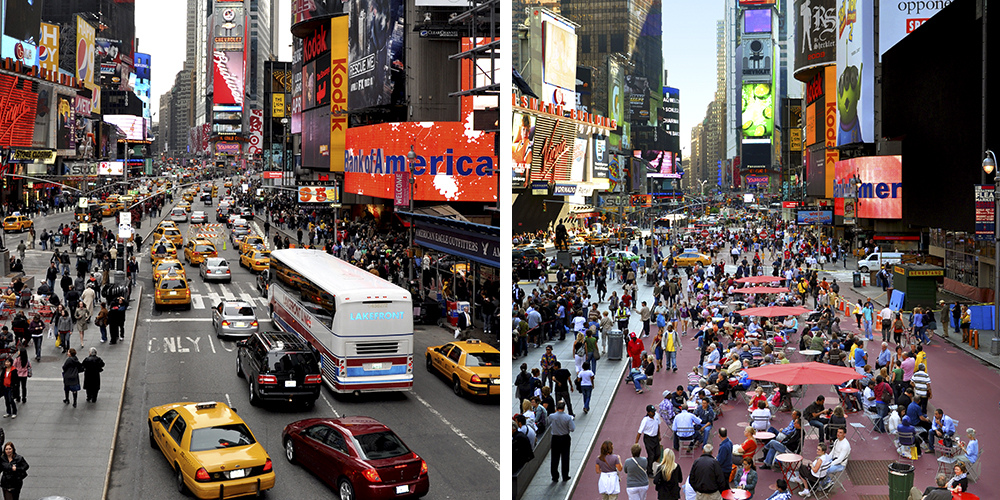
Times Square Broadway Boulevard Pedestrian Zone, Before & After, Image via NYCDOT
You can read a summary of Sadik-Khan’s new book “Street Fight: Handbook for an Urban Revolution” here in UrbDeZine San Francisco by Todd Jersey. To summarize how Sadik-Khan and her team at NYCDOT succeeded in transforming the New York City streets to make them more active and pedestrian/bike friendly, they did three things well: 1) started small, and built on the success of each project; 2) used creativity, planning, and paint, rather than construction and expense; and 3) researched, used data, and were tireless in their efforts to convince businesses, residents, and representatives to give the projects a try.
Royal Blue Parklet (Austin, TX)
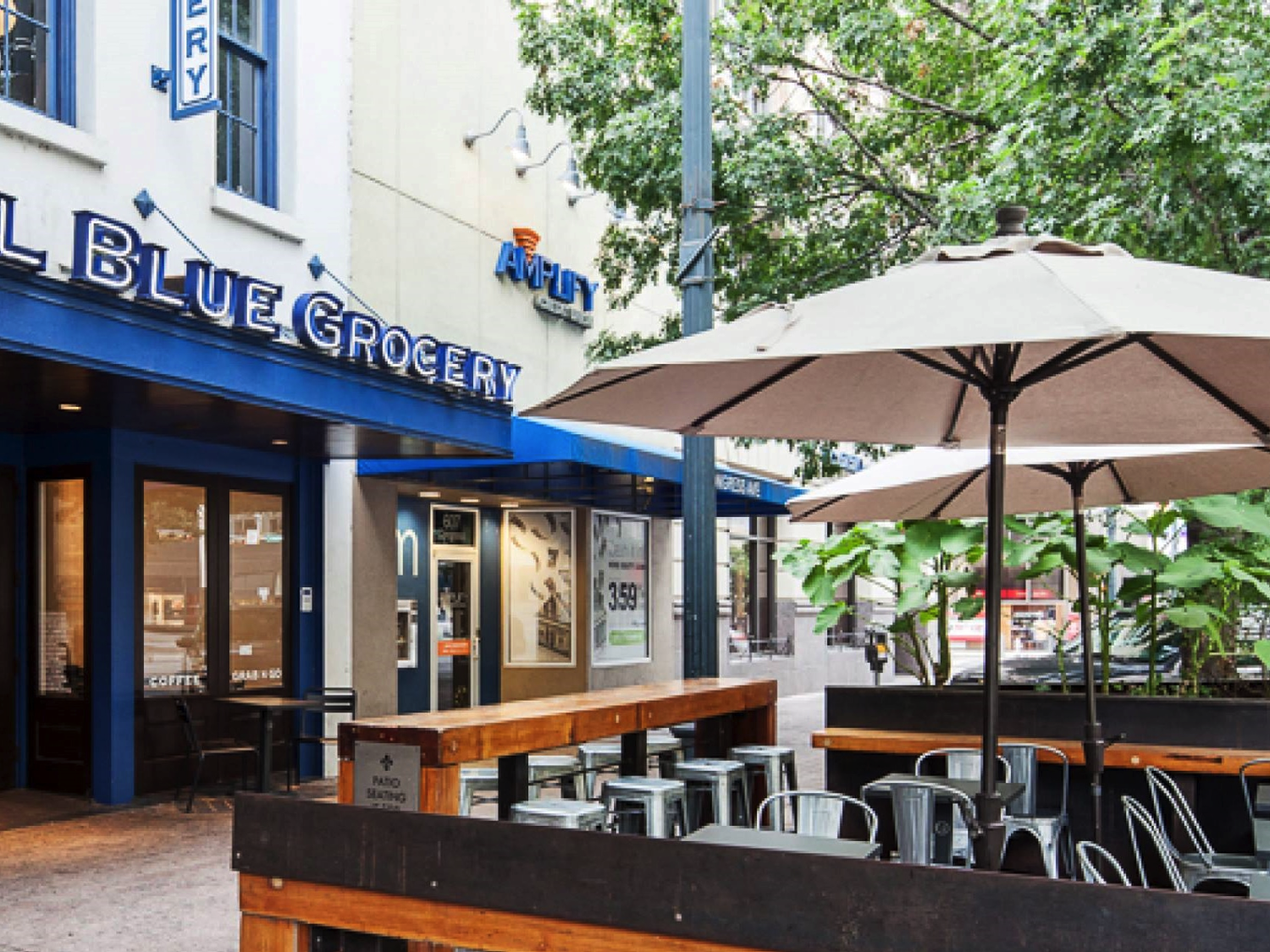
Royal Blue parklet, downtown Austin, TX
The reuse of on-street parking spaces is a creative approach for activating a streetscape. Along downtown Austin’s Congress Avenue, two angled parking spaces were converted into sidewalk cafe seating for Royal Blue Grocery in 2013. The conversion worked so well that the project received a ULI Award of Distinction and has become a permanent fixture in downtown Austin. Hit me up to meet me for a cup of coffee here next time you’re in town (unless its right now during the annual July/August heat wave!).
Strategy #5: Temporary Activations
Alamo Drafthouse Roving Cinema
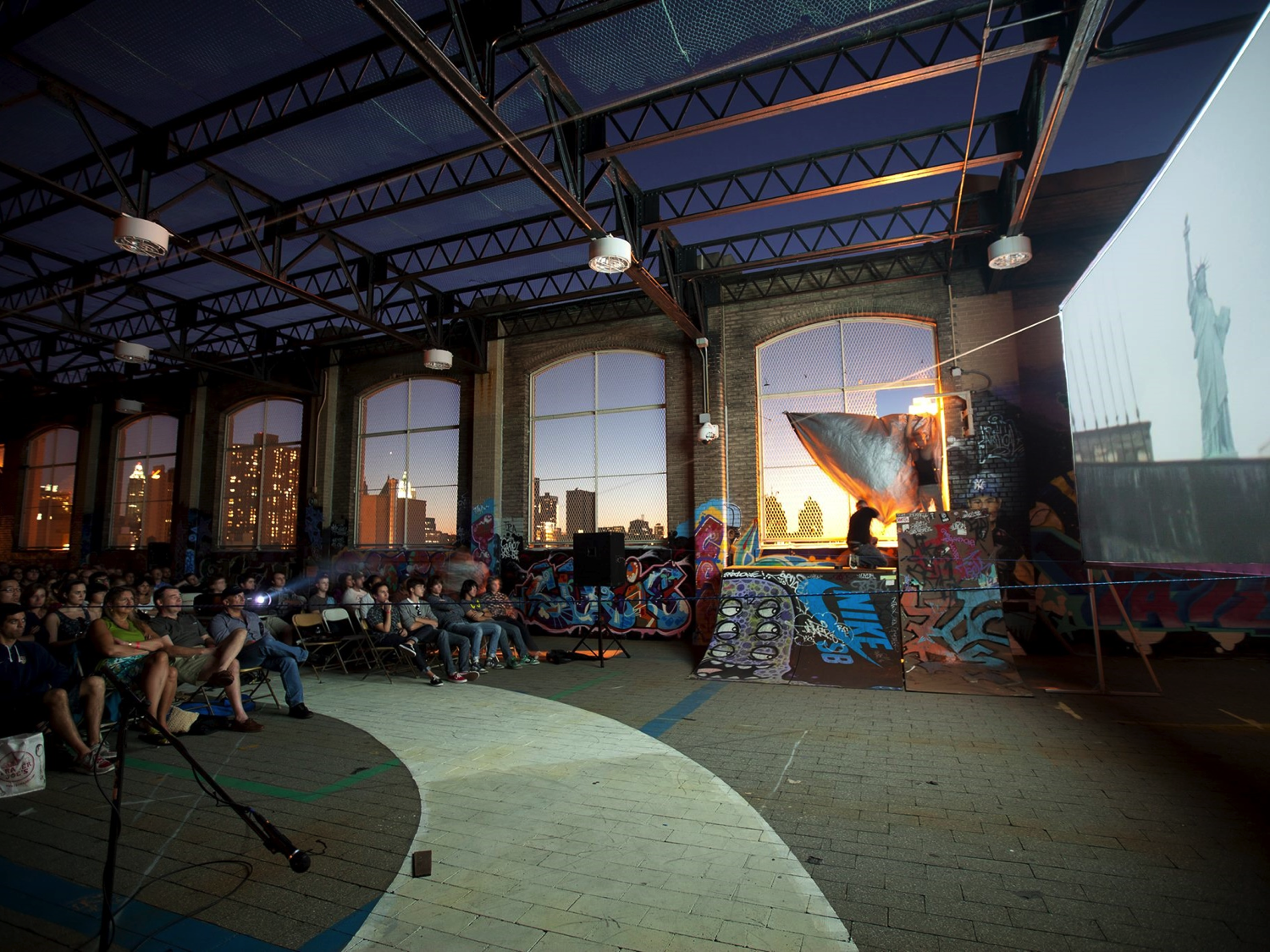
Alamo Drafthouse Rolling Roadshow 2010 Screening of Godfather NYC Lower East Side via Facebook
Alamo Drafthouse is known for its role in disrupting the conventional movie theater industry by creating a higher-quality experience fueled by craft beer and legitimate good food that goes way beyond popcorn and pickles. They’ve also done some other innovative things, such as taking iconic movies and screening them in distinctive non-theater venues (like the Godfather screening above in NYC). This is similar to the “movies in the park” approach taken by lots of cities during summer evenings, but adds a new twist: the activation of under-utilized spaces.
Better Block Project
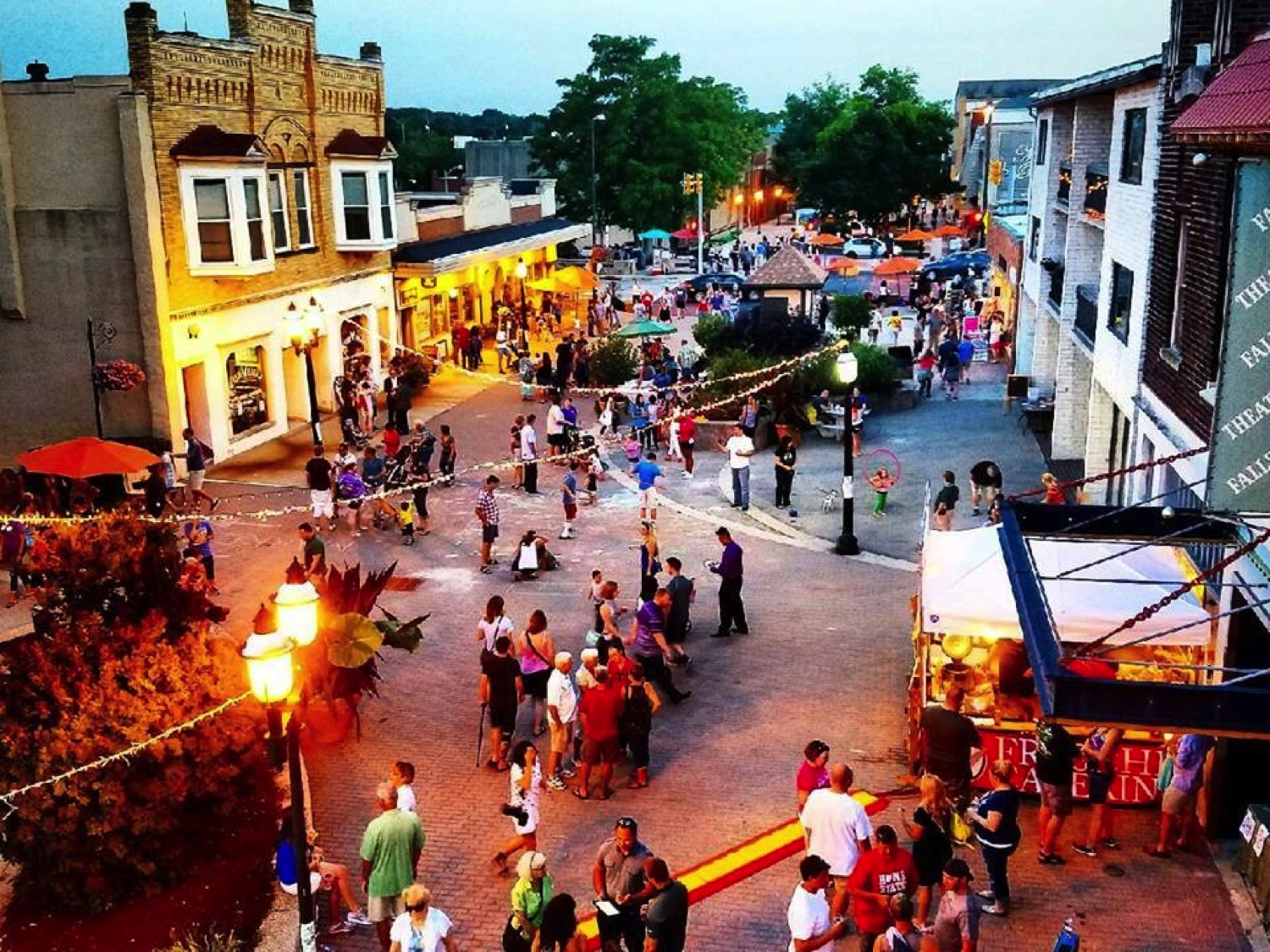
Cuyahoga Falls Better Block via Facebook, The Better Block
The Better Block Project started out in 2010 when a small group of creative people laid out a bold vision: making one block in Dallas better. Yep, that’s it. Not very “visionary” sounding, right? They didn’t lobby the city for major infrastructure investments, they didn’t come up with a big marketing/branding campaign for their street, they hardly spent any money. But what they achieved, and learned, was that you can dramatically enhance the vitality of an urban space by implementing a series of quick and cheap tactics to improve the user-friendliness of a specific area.
These guys were the forefathers of the “tactical urbanism” movement that has taken downtowns by storm in recent years. The Better Block Project has evolved to take its back-to-basics style of urban activism to dozens of cities across the US and internationally.
Sound Places Program (Project for Public Spaces)
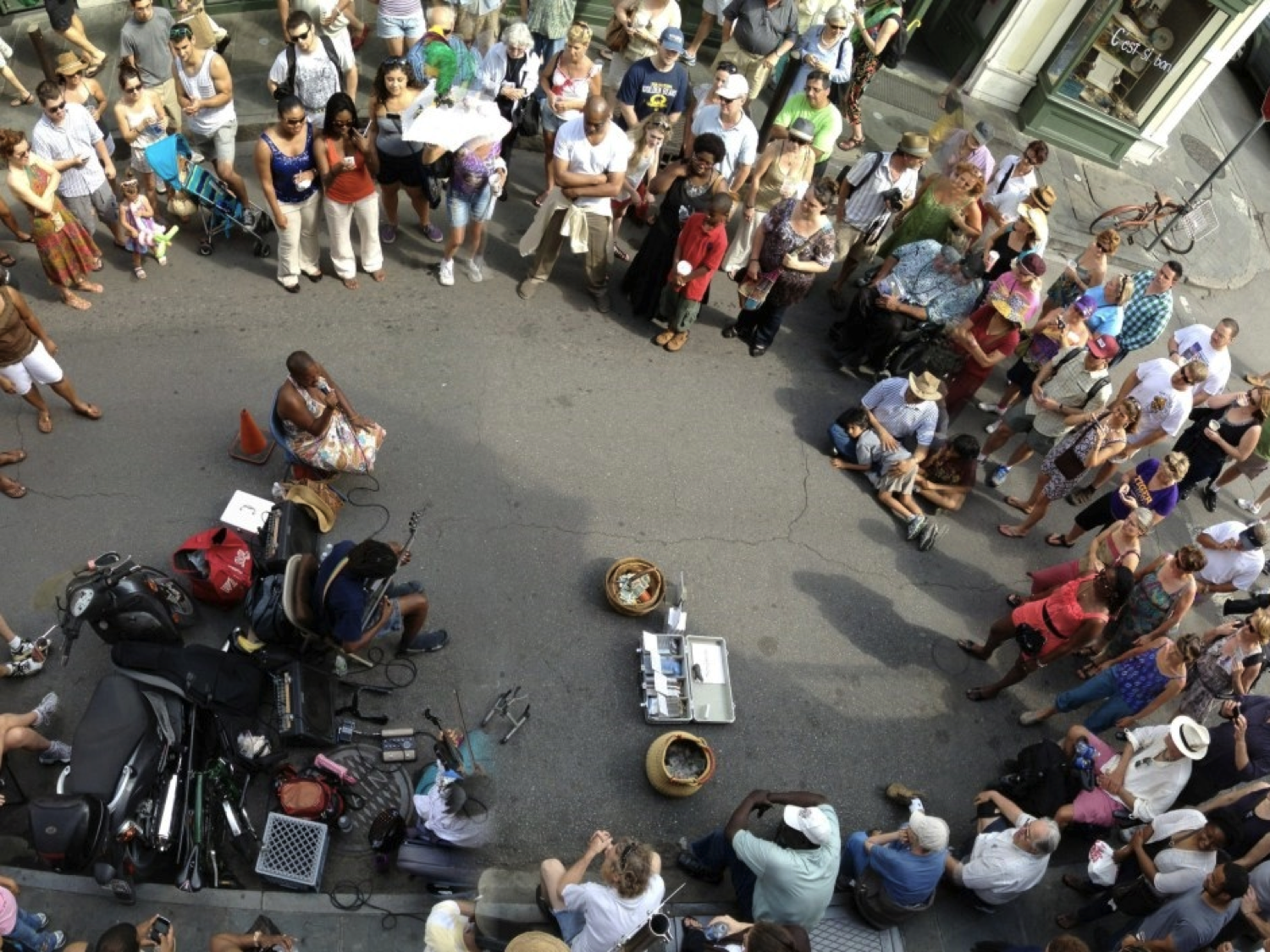
Image via Louisiana Division of the Arts featured on https://www.pps.org
Project for Public Spaces, based in New York, is the other forefather of tactical urbanism. They’ve been developing theories and practical tools to activate public spaces for a long time. And their work, like the Better Block Project, spans the globe. One of their more intriguing projects in recent years is the Sound Places Program. This project incorporated musicians, artists, K-12 students, and civic leaders over a week-long event of community engagement, interactive performances, and other collaborative efforts in 2 of Louisiana’s Cultural Districts. This project was aimed at helping communities re-imagine public spaces and corridors.
Another transformative effort PPS is engaged in is the Anne T. and Robert M. Bass Initiative on Innovation and Placemaking, a collaboration with the Brookings Institution. That project deserves its own separate discussion (hmm, good idea…a blog on innovation districts!) since it’s the perfect cross-contamination of the economic development & urban planning professions. But that’s a topic for another day…
PARK(ing) Day
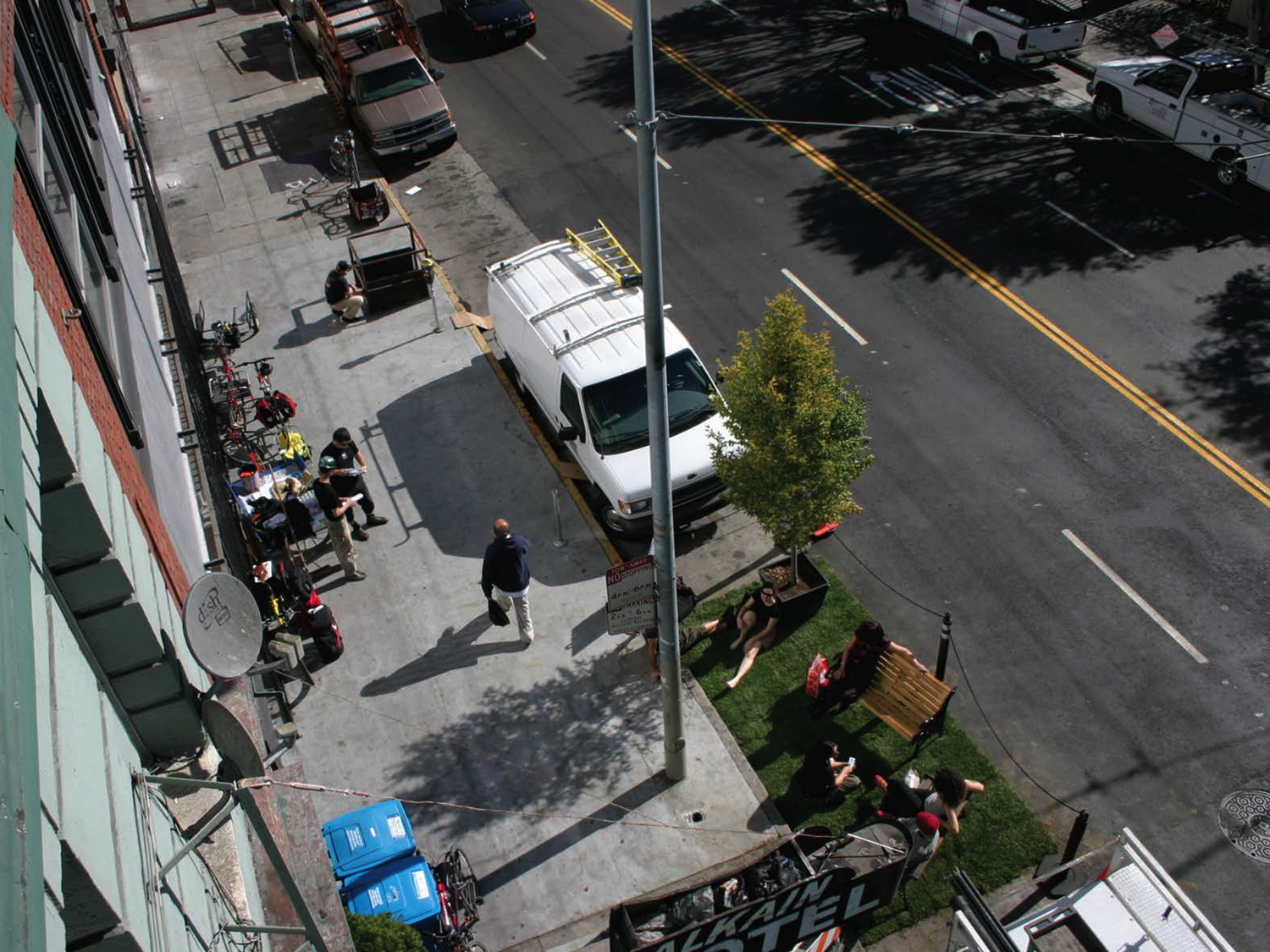
PARK(ing) Day installation via http://parkingday.org/
I participated in one of these in Midtown Manhattan back in 2008. We took a single parking space on 9th Avenue near 42nd Street and turned it into a temporary park with real “fake” grass, a live juggler, and other fun stuff. This is a great way to get people to re-think the value and potential of public spaces that we often take for granted.
Bottom Line
You have plenty of options at your disposal when thinking about how to activate the empty spaces in your community. Potential strategies range from the big and bold to the quick and cheap. I hope these examples have inspired you to try something new (or continue an existing effort) that brings new energy into your community! Also, I’m interested to hear your ideas on what has or hasn’t worked well in your city. See you in the comments section…




Thank you John for this comprehensive update.
Thank you, David! Glad you found it to be useful.
Excellent photos, with descriptions that flow seamlessly, yet are densely informative. I also appreciate the light tone and laid-back undertone of the language And one feels that you also try to recognize and acknowledge the efforts of others who have contributed to the success of the projects you have highlighted.
Thank you for the feedback! Yes, lots and lots of people deserve credit for each of these examples.
Nice work, John. It was a great read. You obviously put a lot of thought and research into this piece.
Thank you, Levi! Great to hear from you and hope all is well. Yes, this one was a lot of work but fun to put together!
A common thread visible in almost all these repurposed, innovative sites is the welcoming draw they offer many segments of the social fabric — curious passers-by, people from all walks of life, age groups, ethnicities. Great opportunities for social interaction, economic and cultural growth are an inevitable by-product of such inviting scenes.